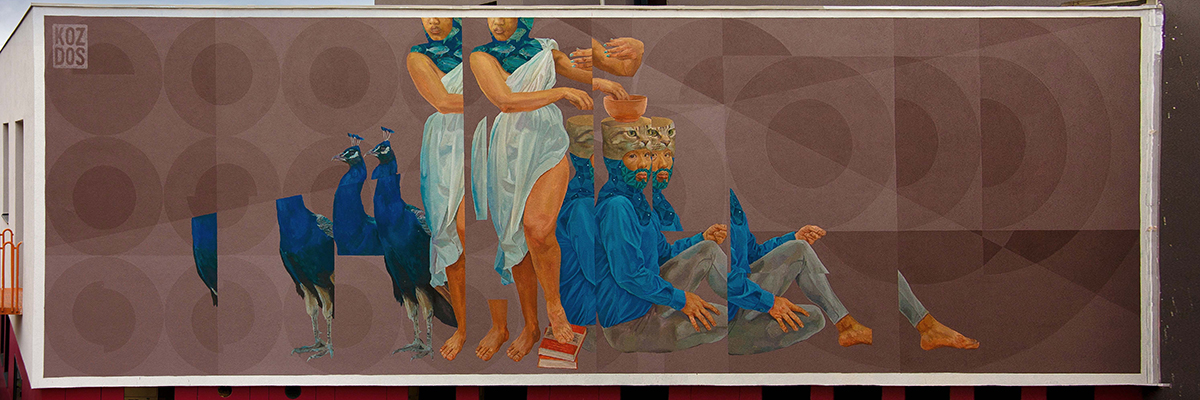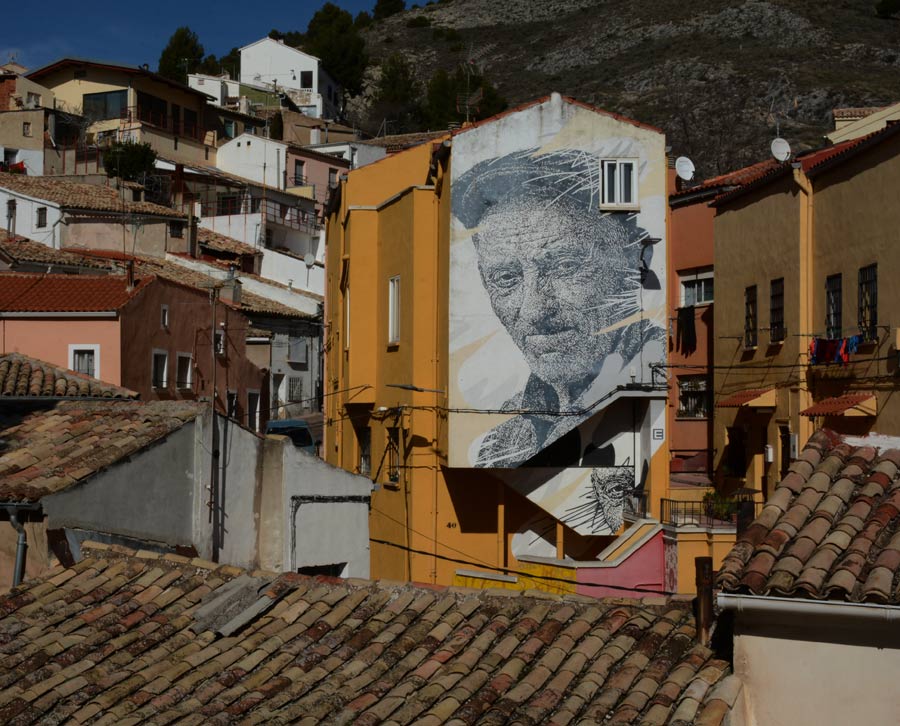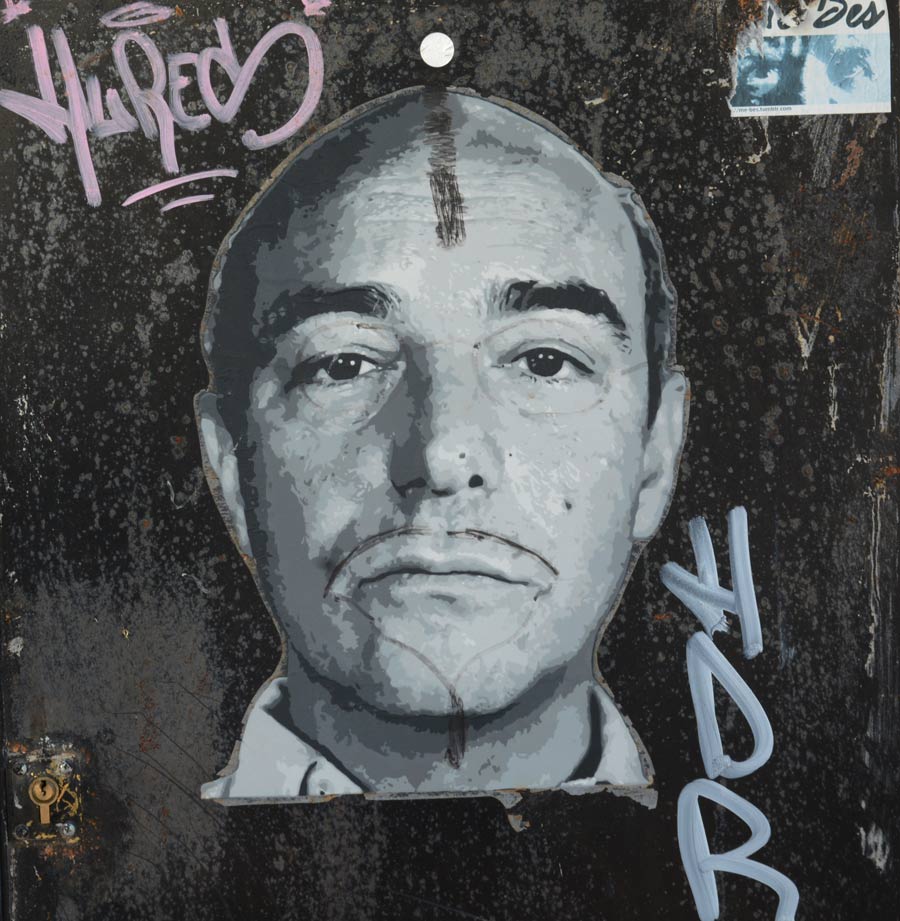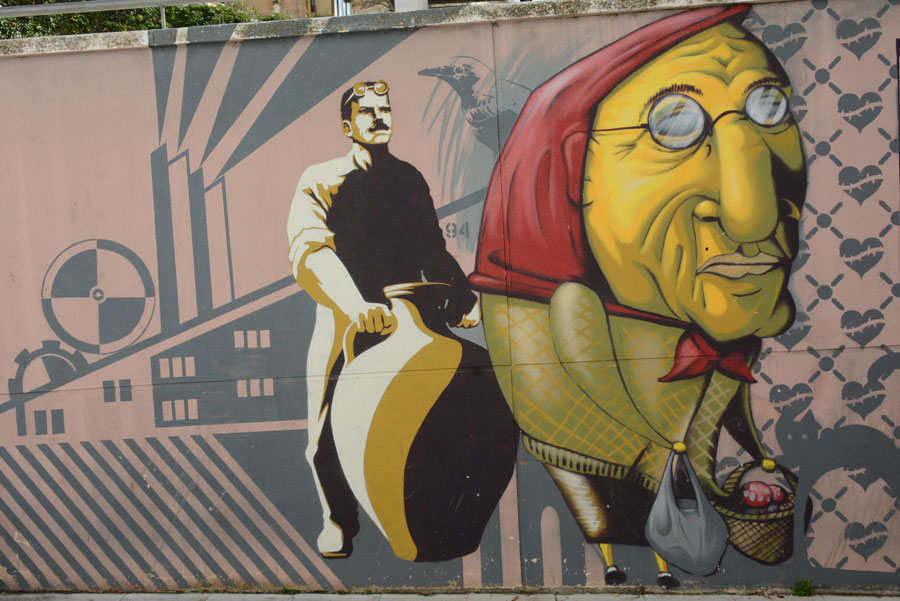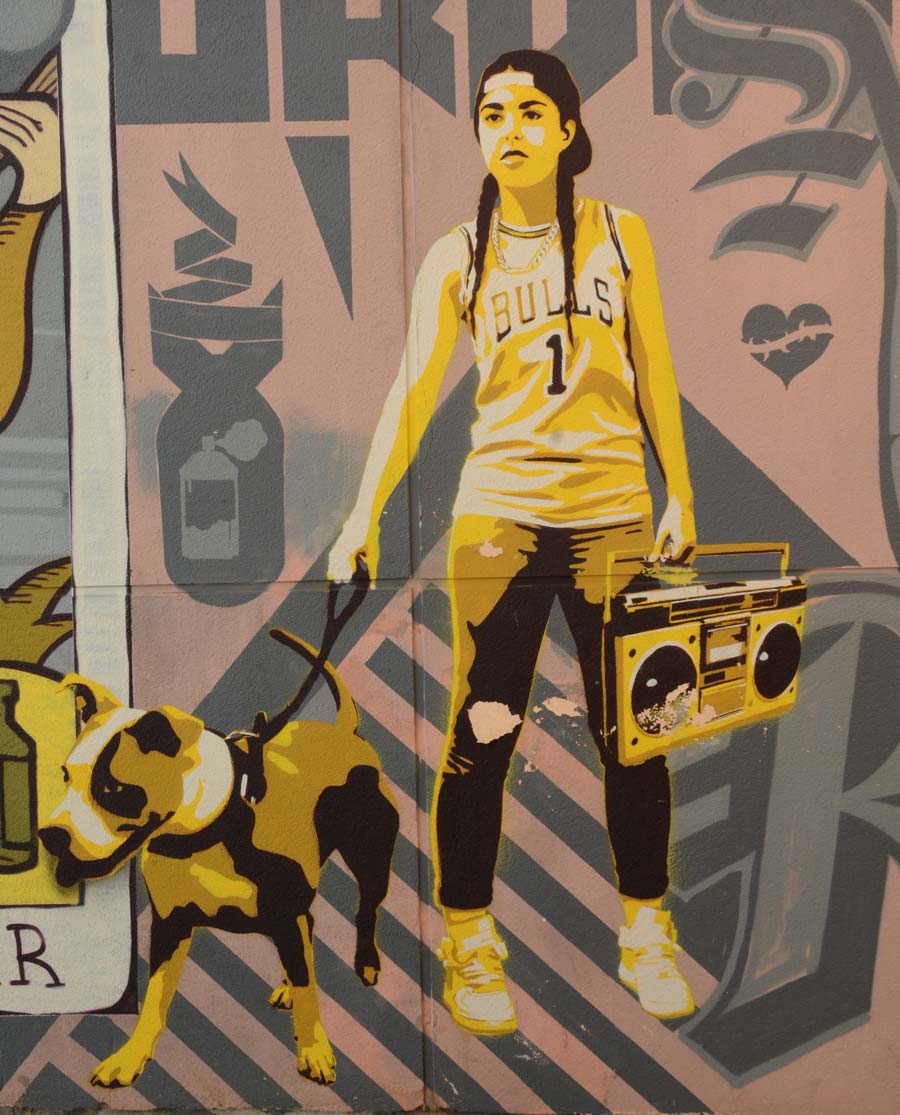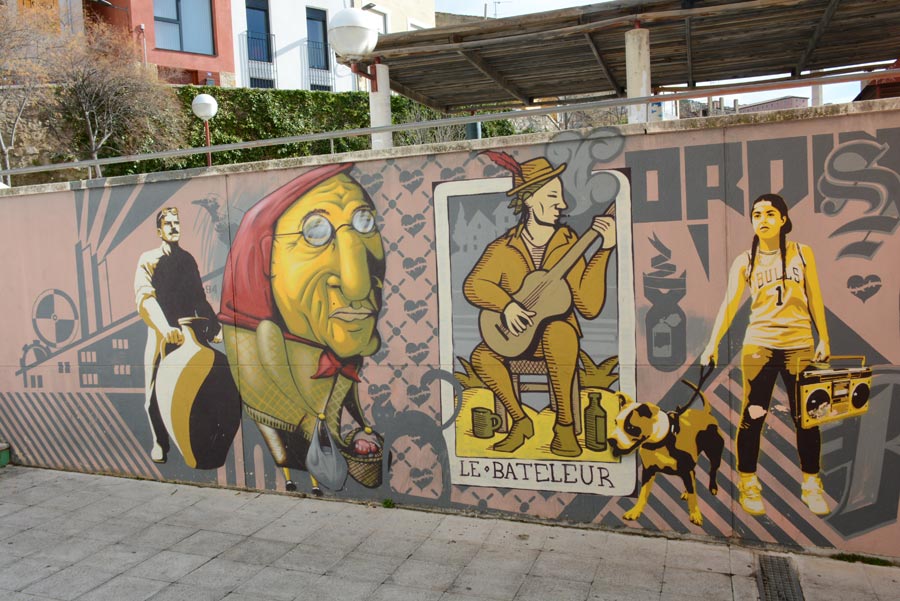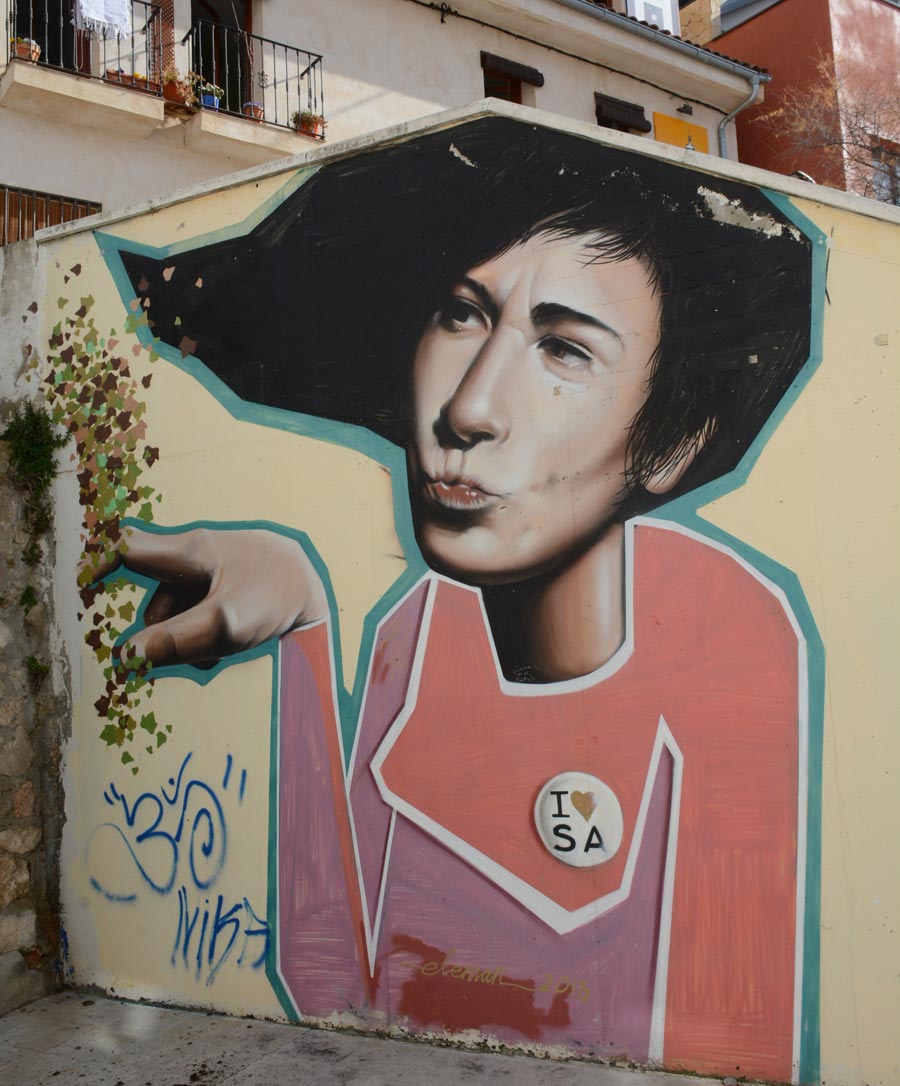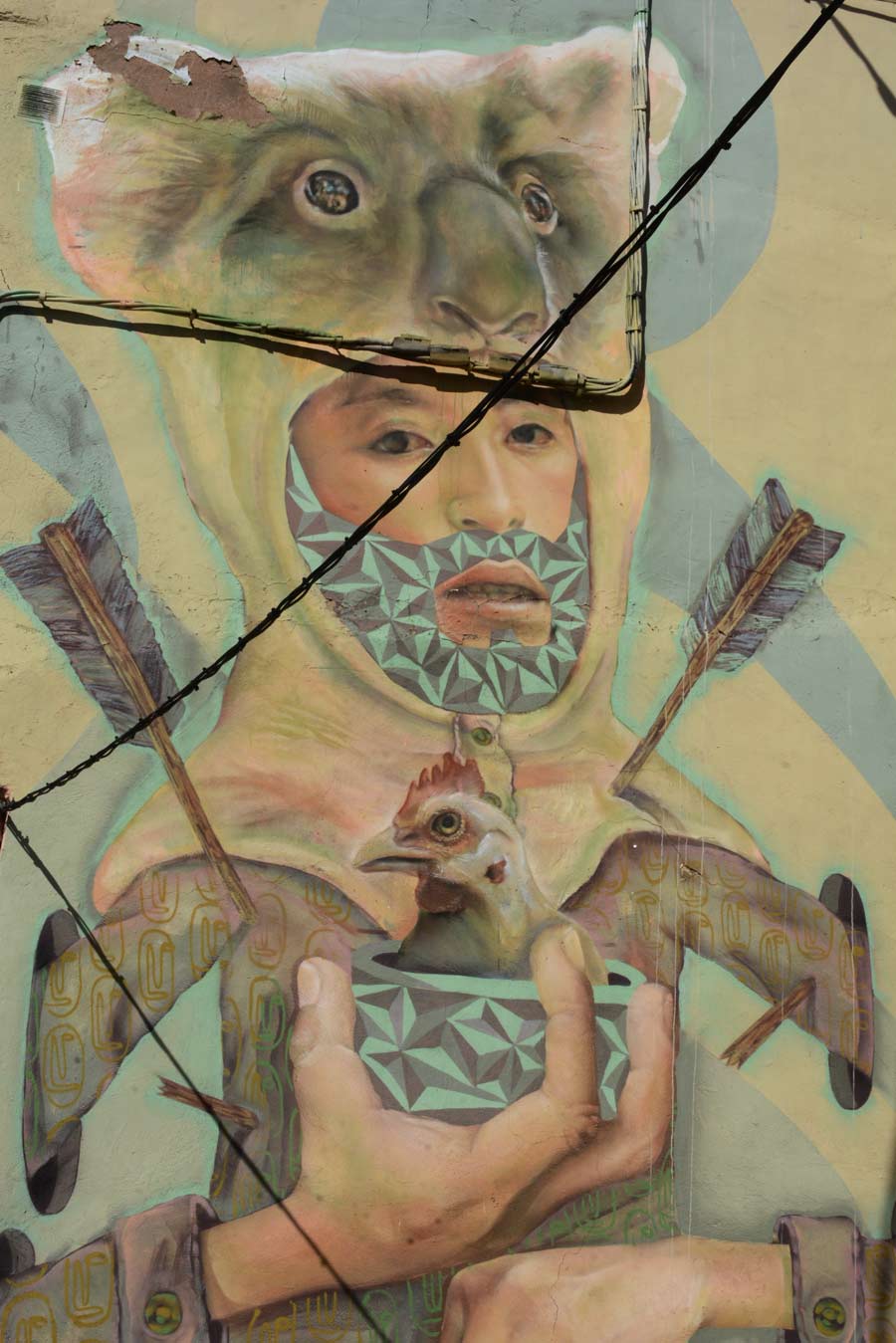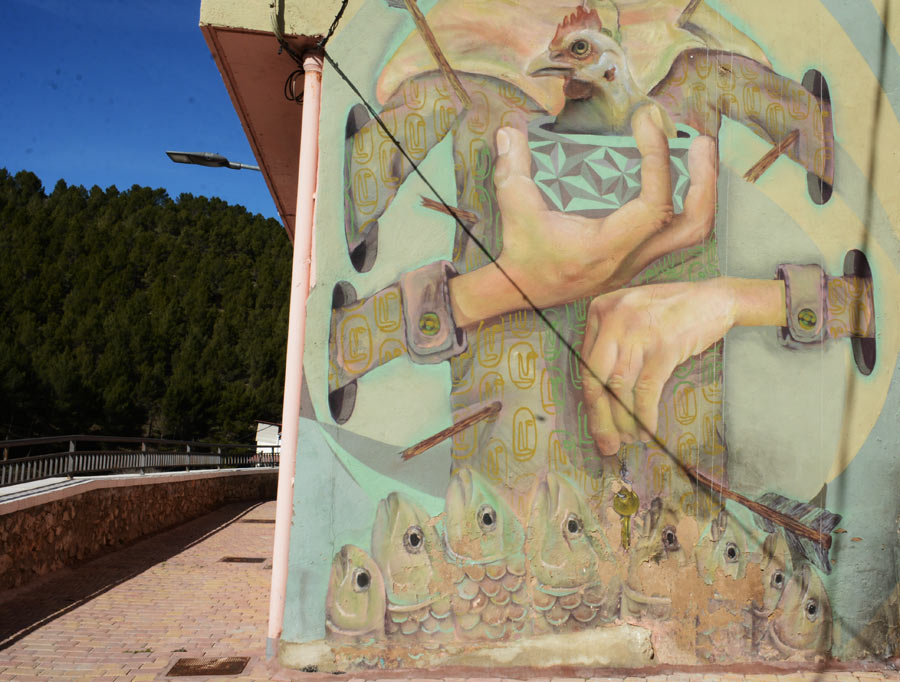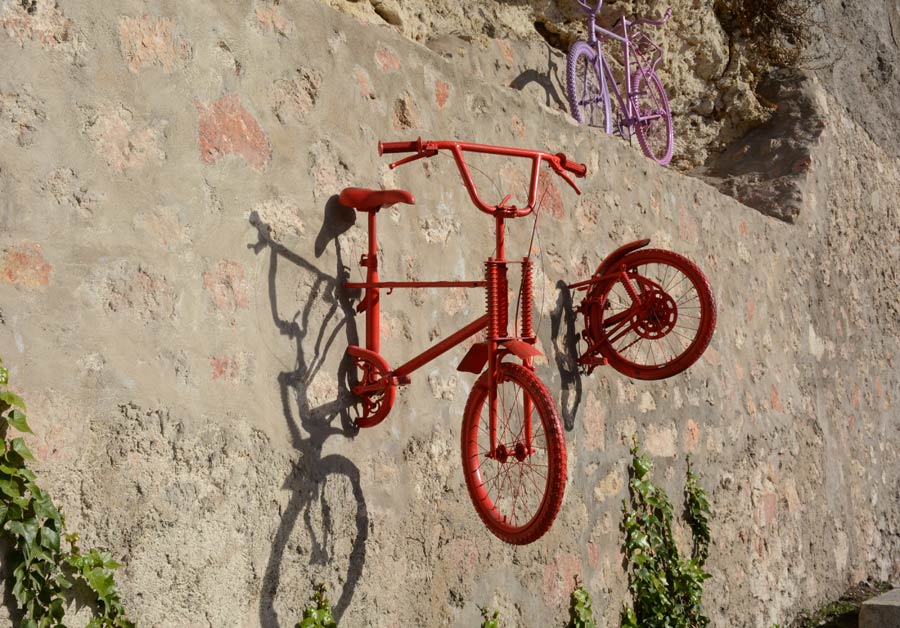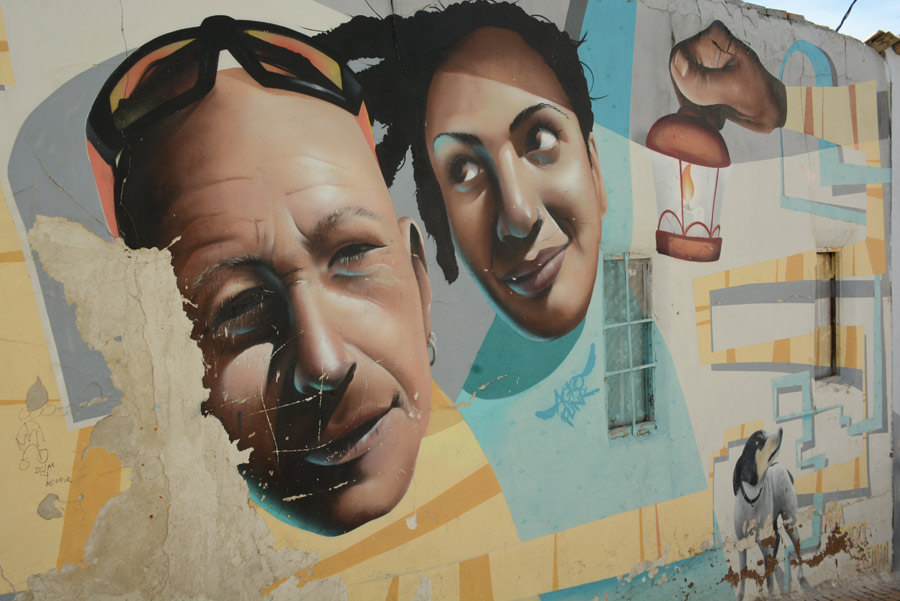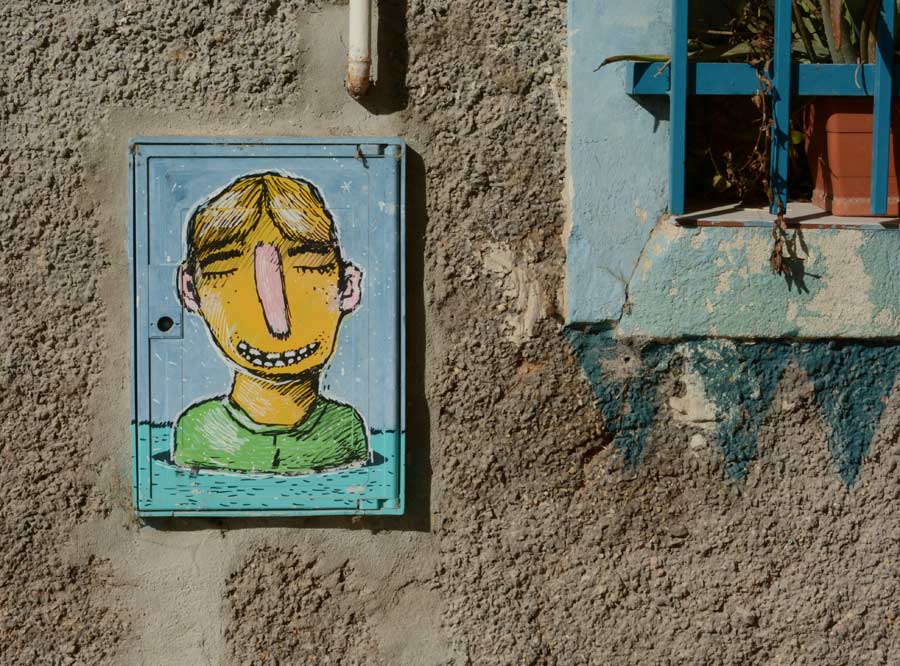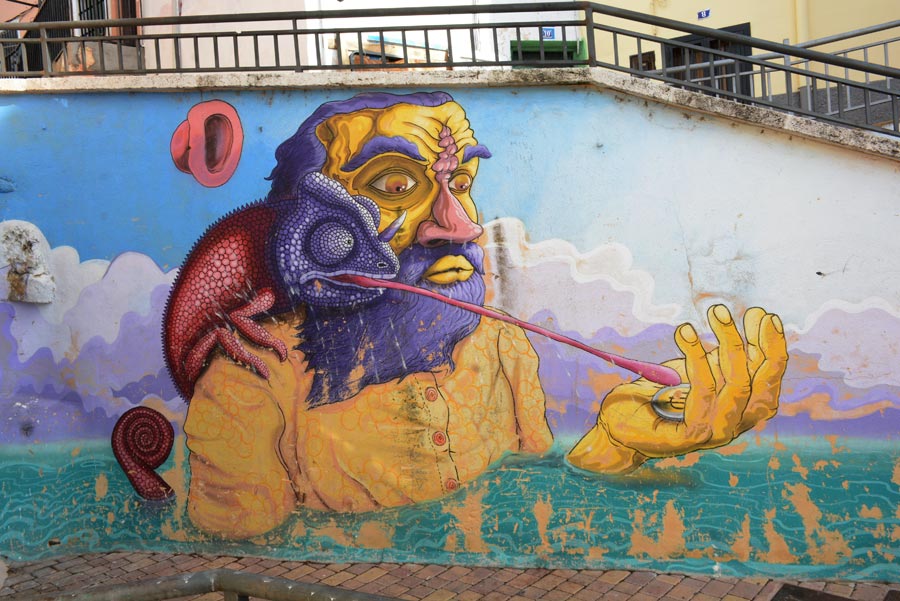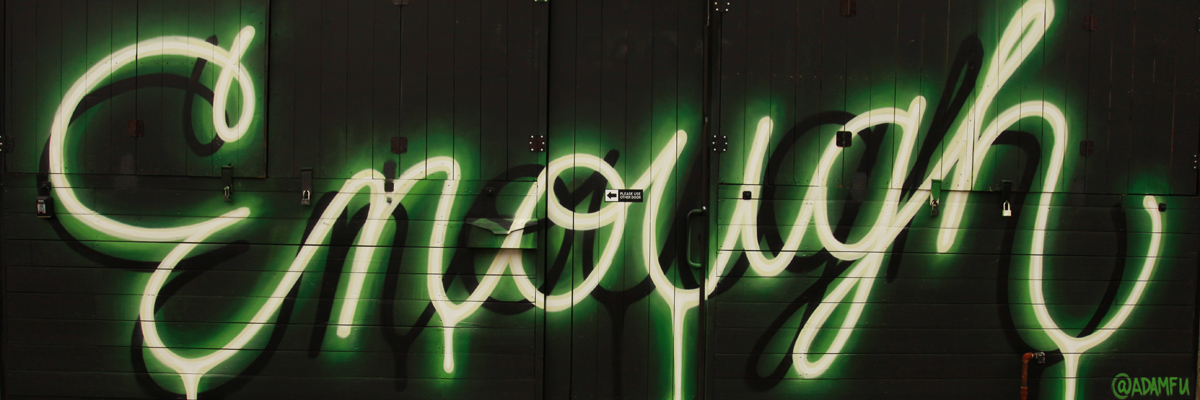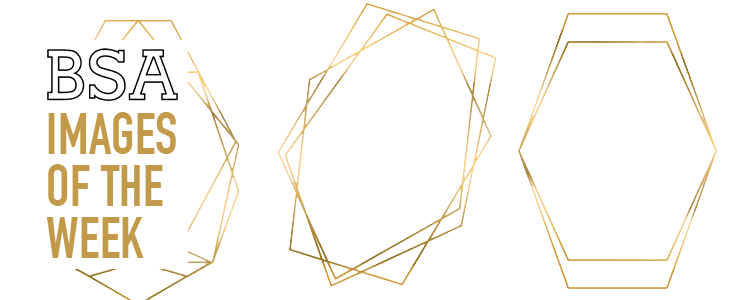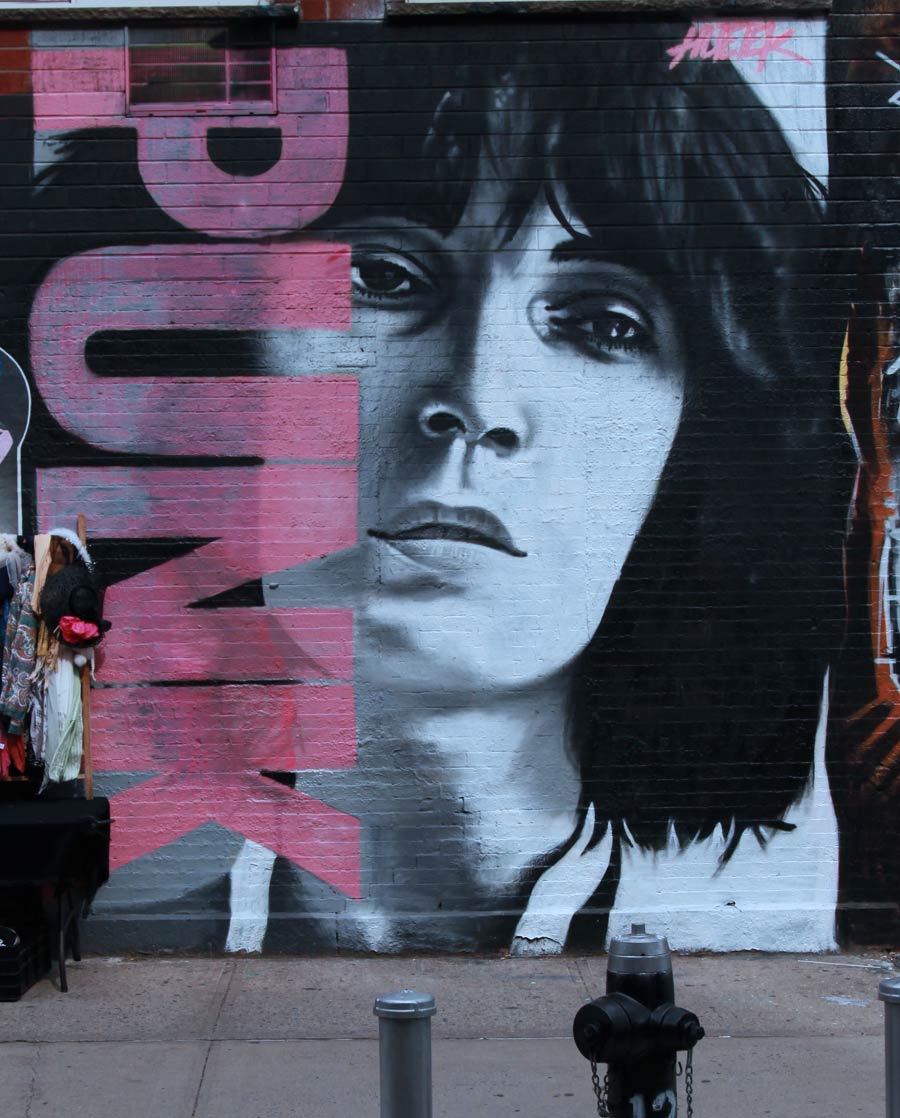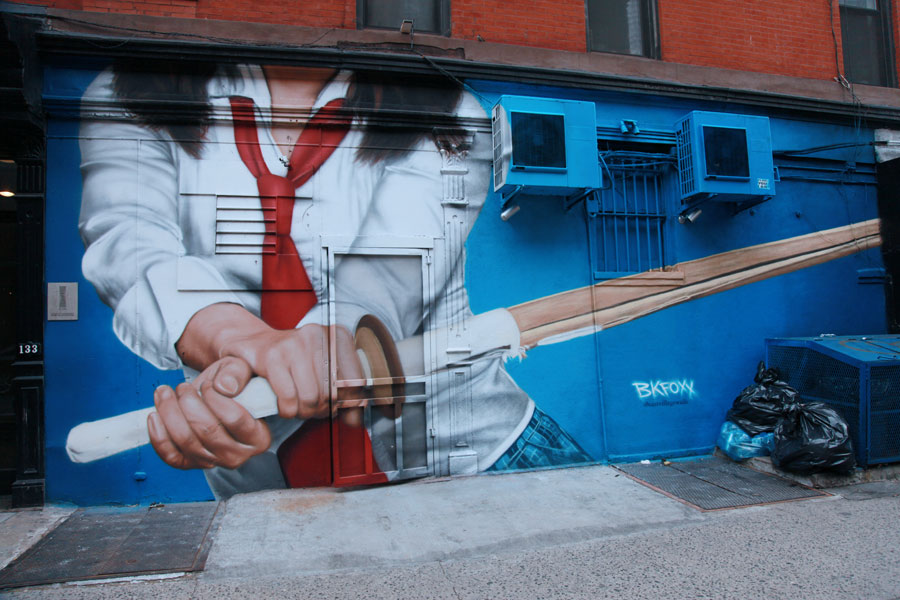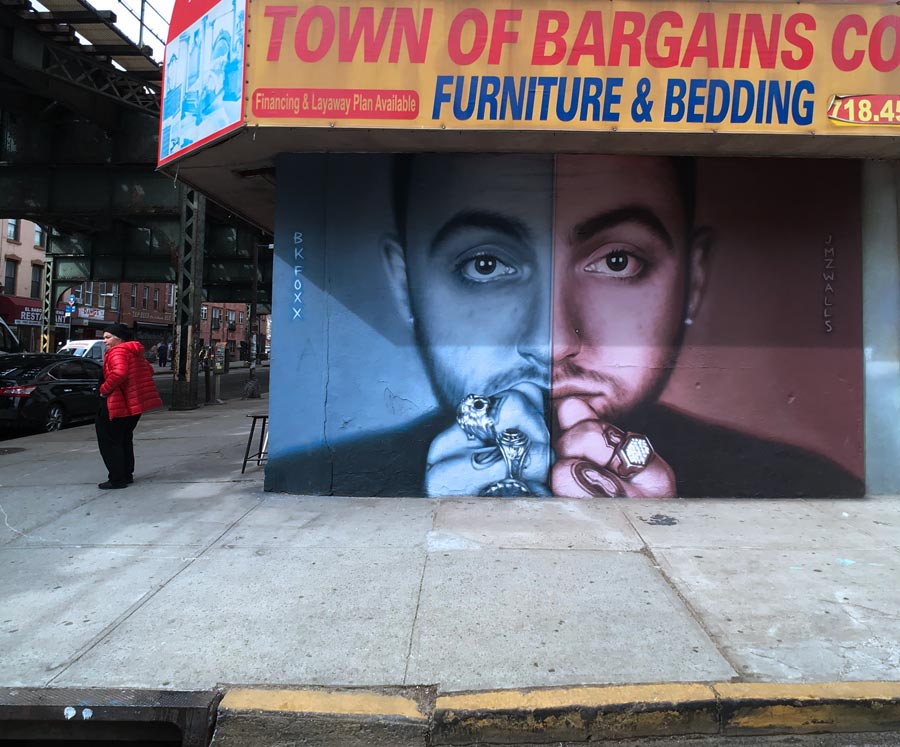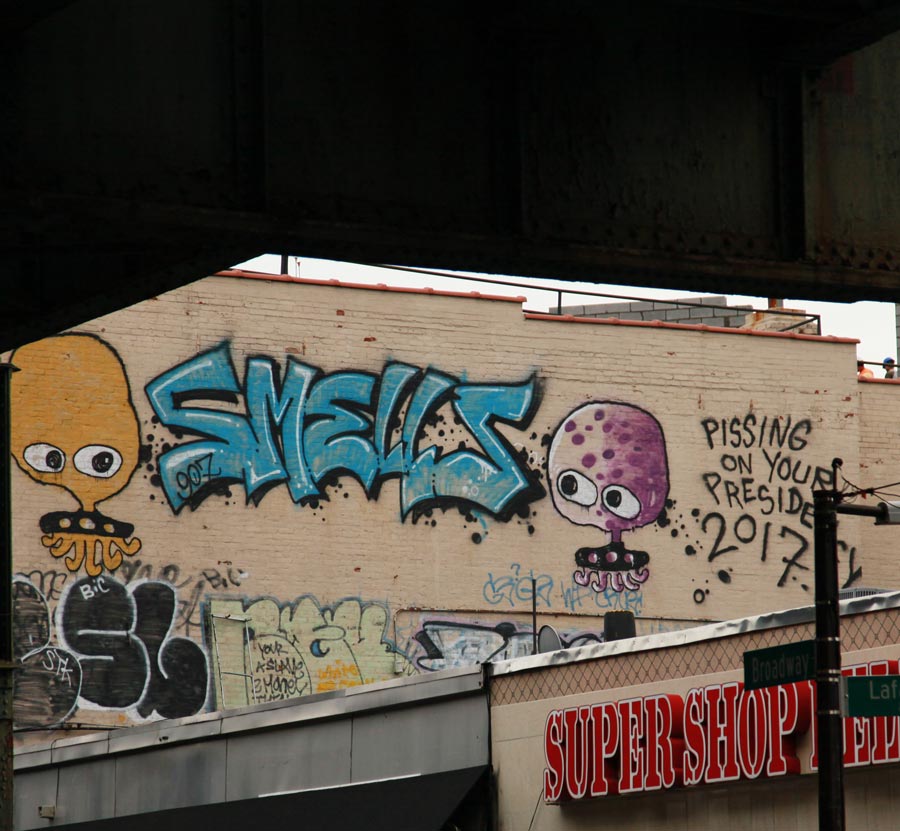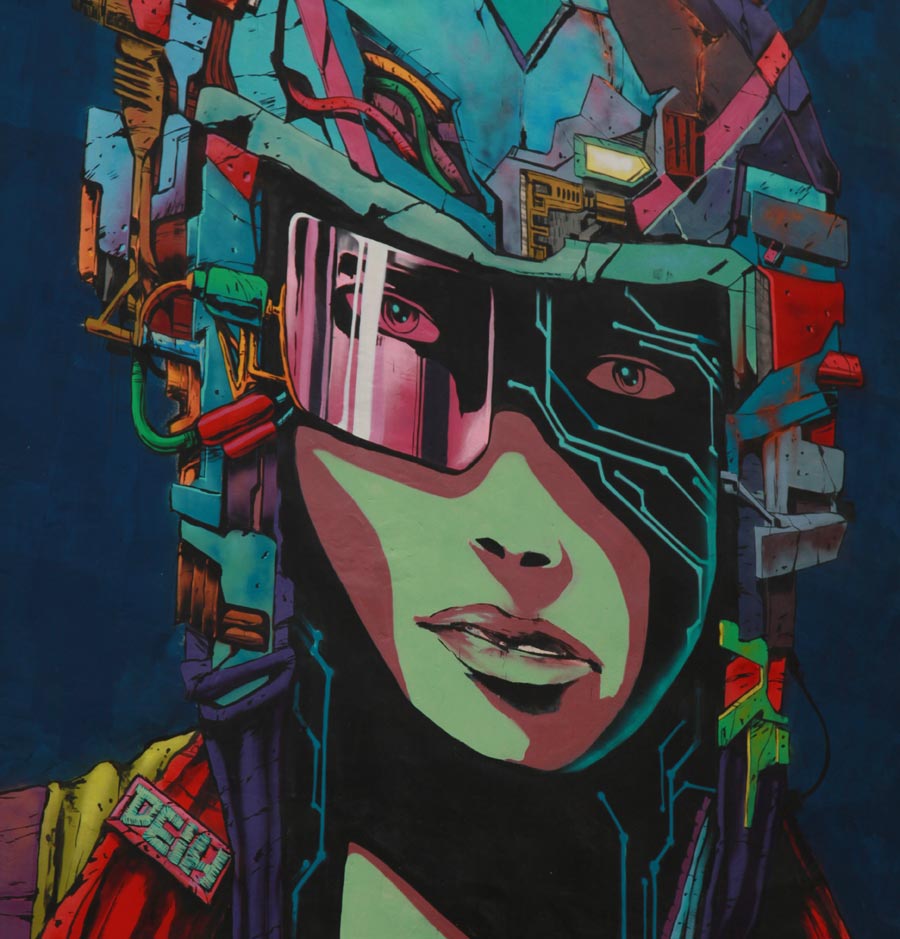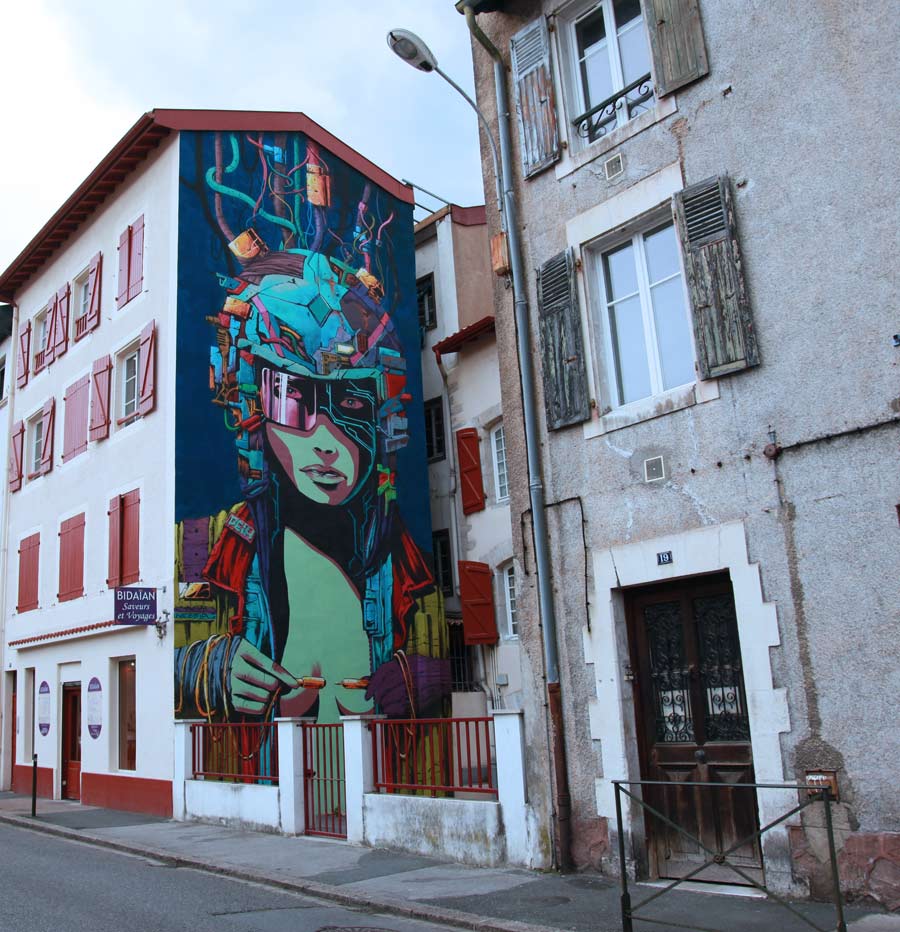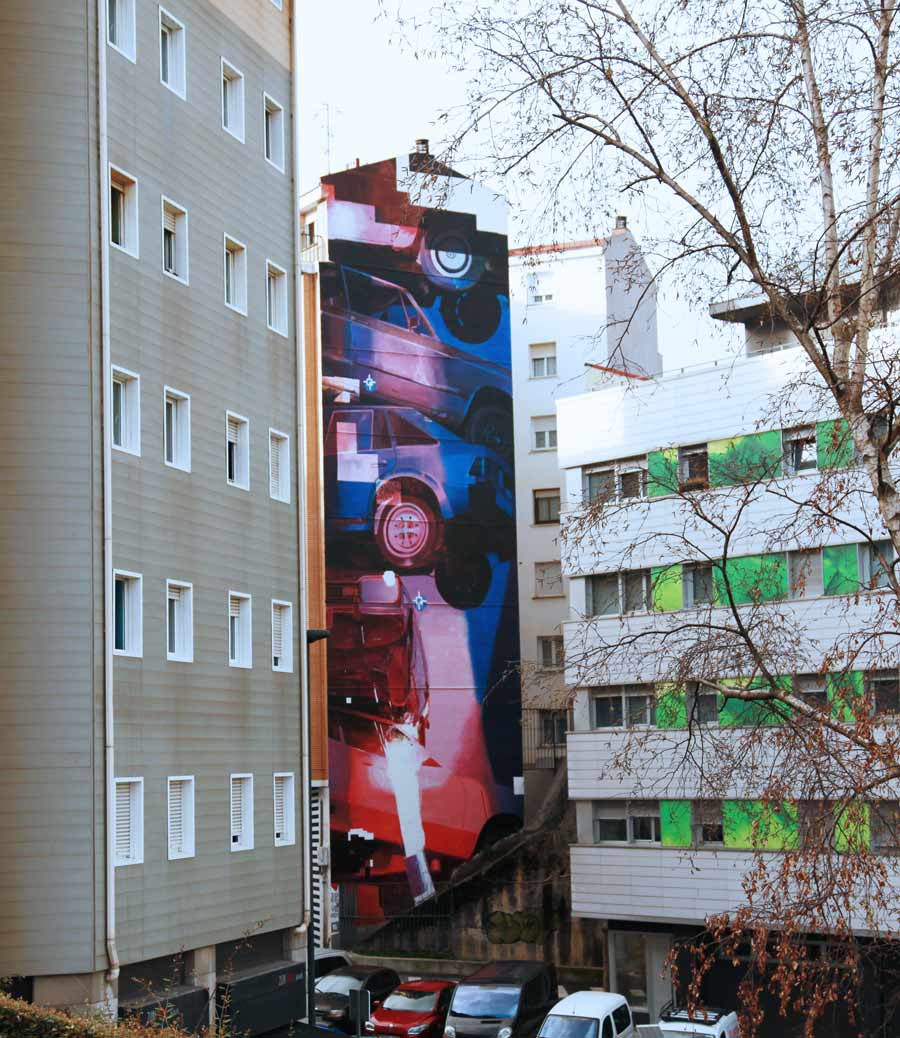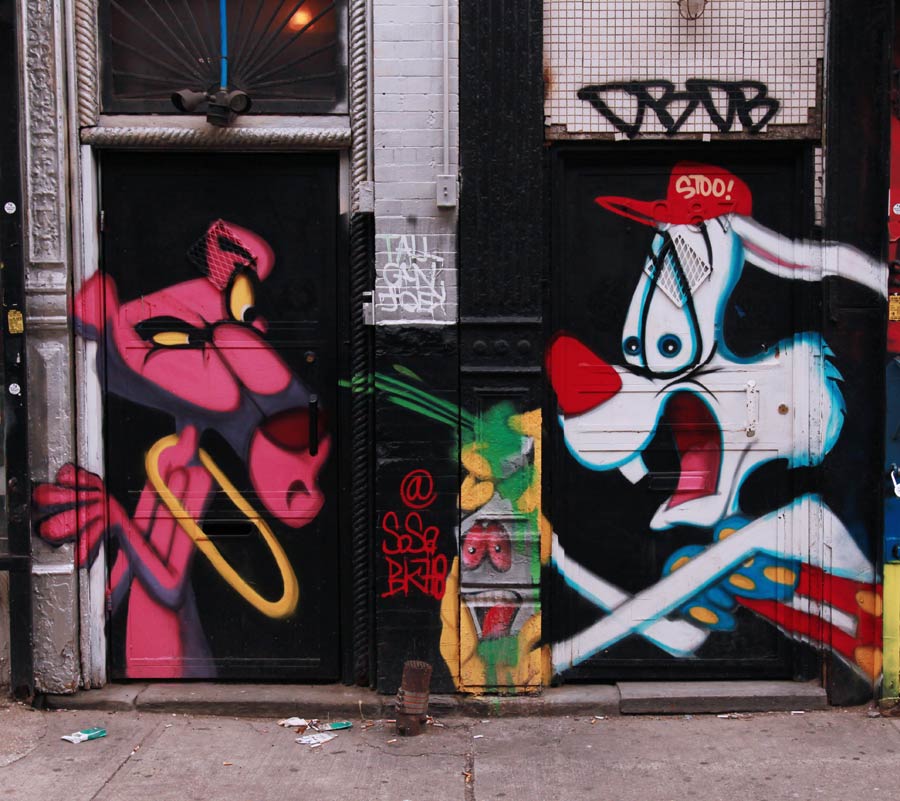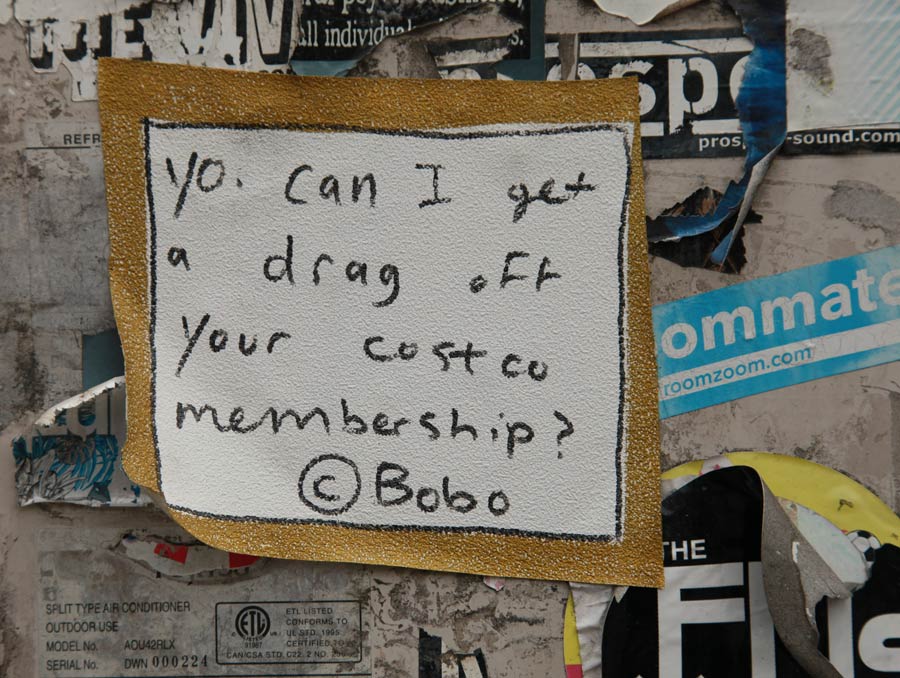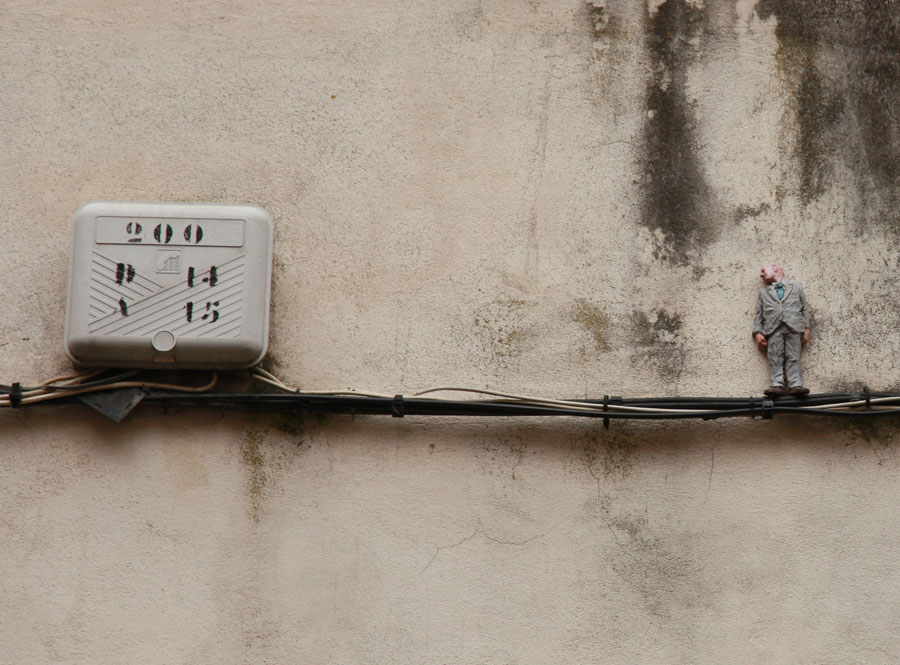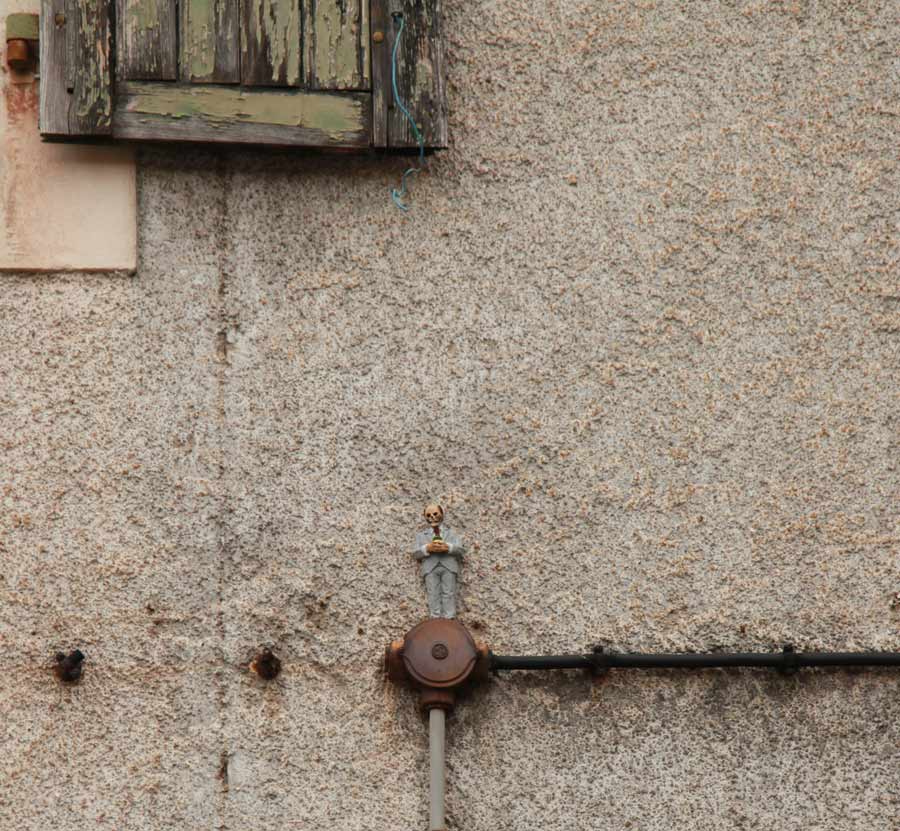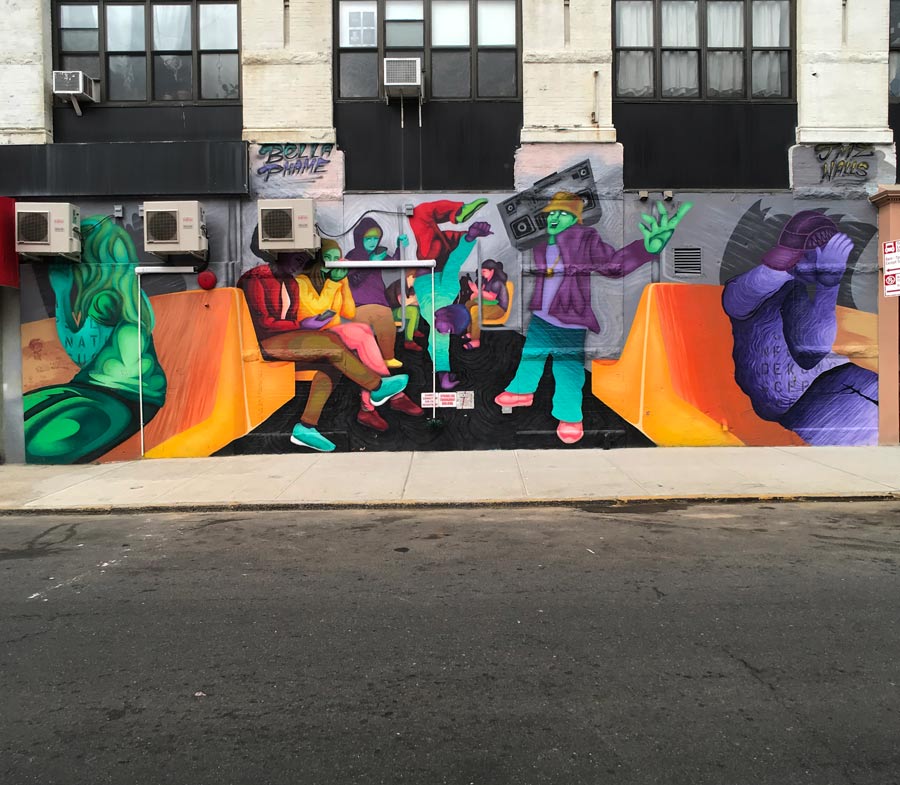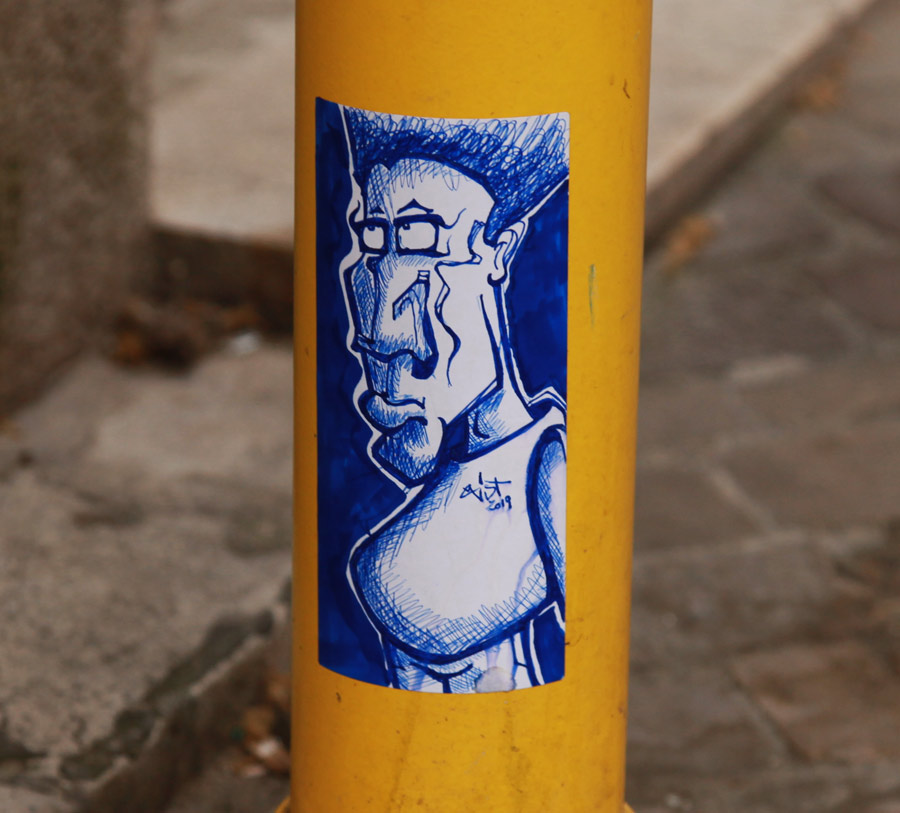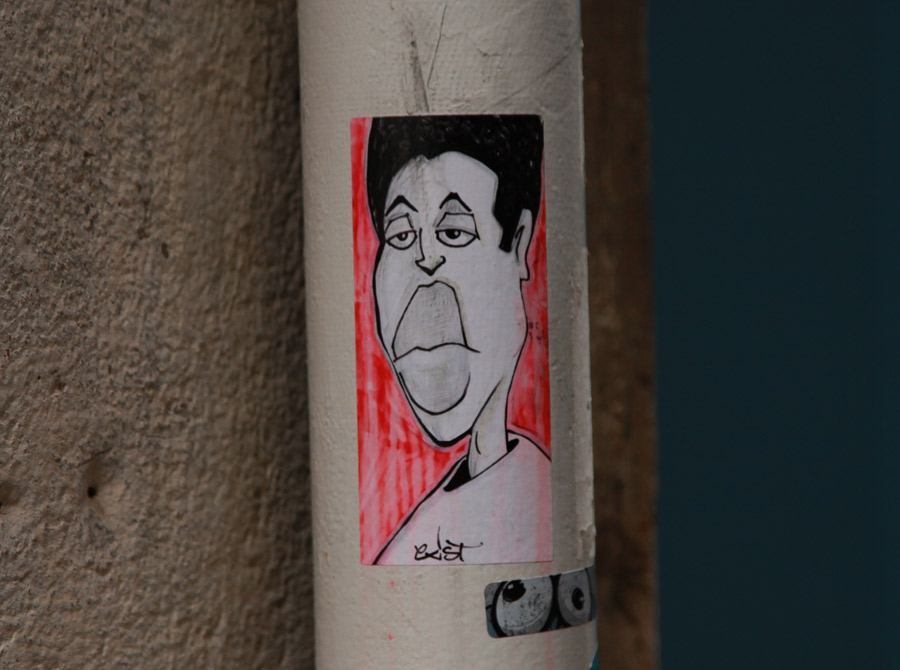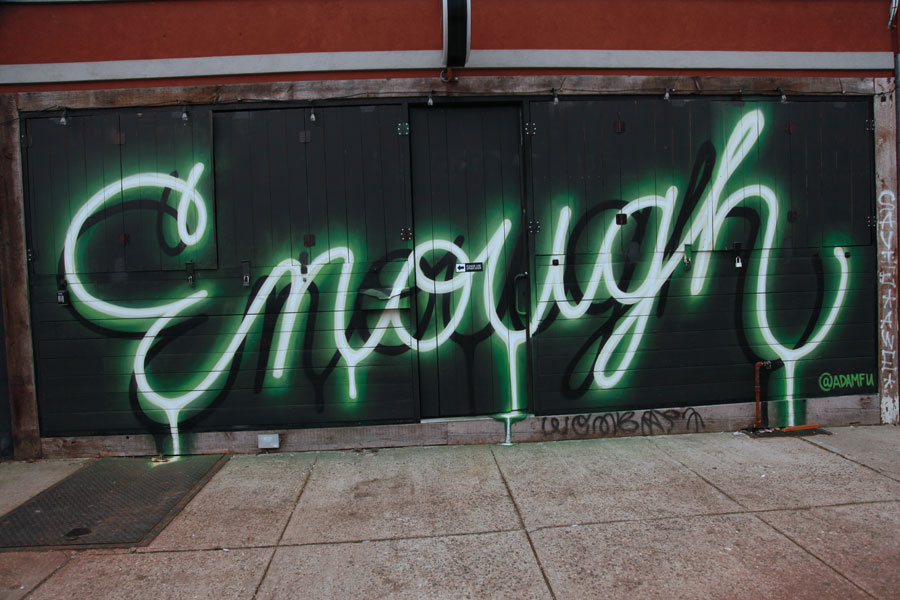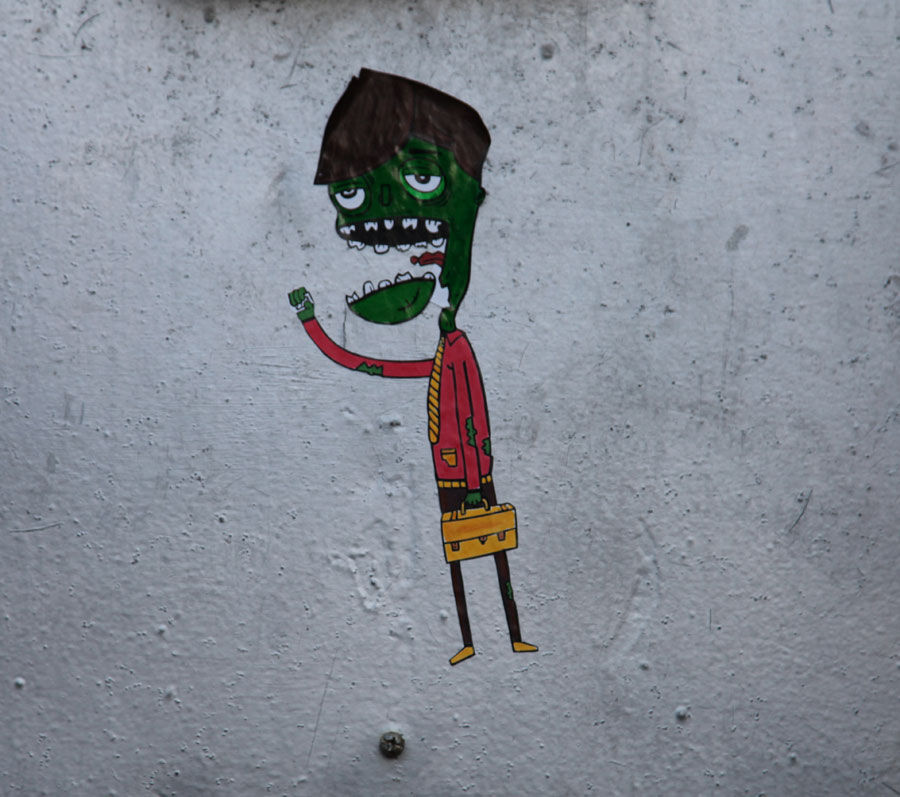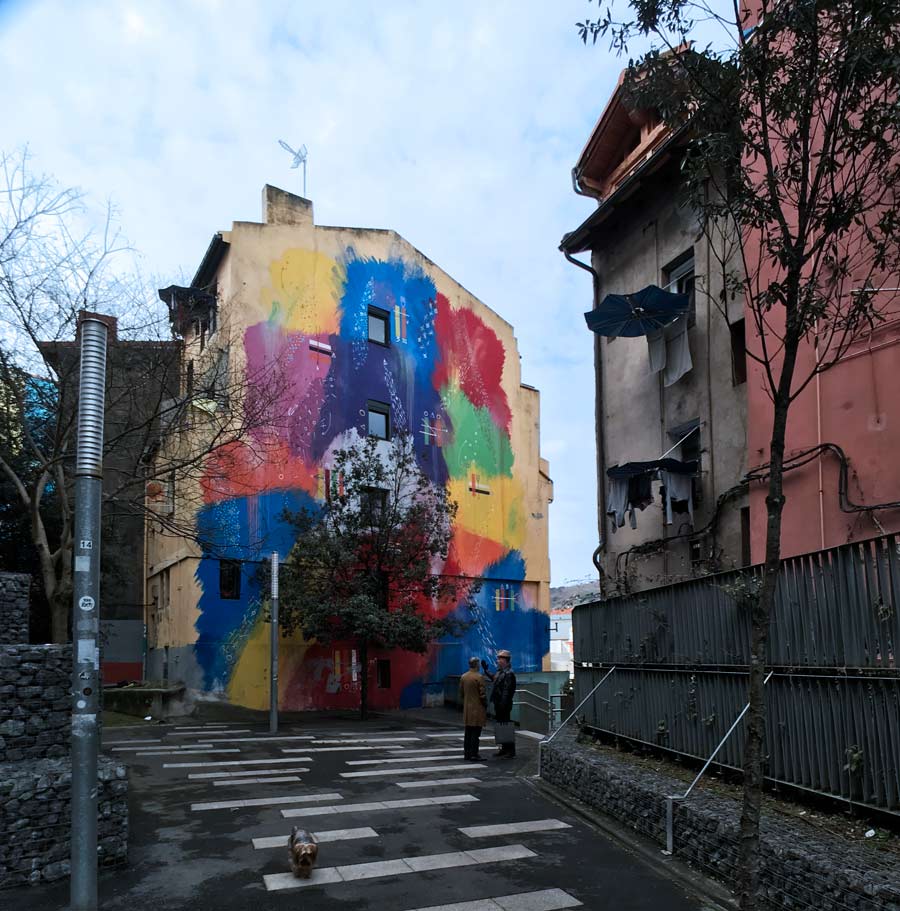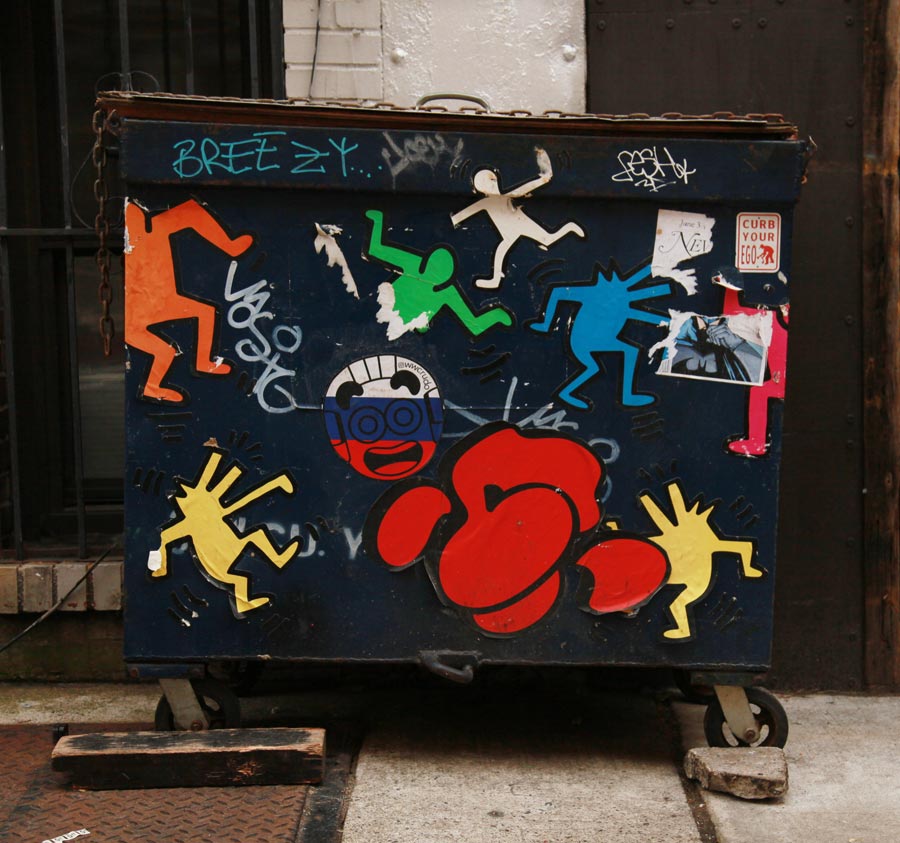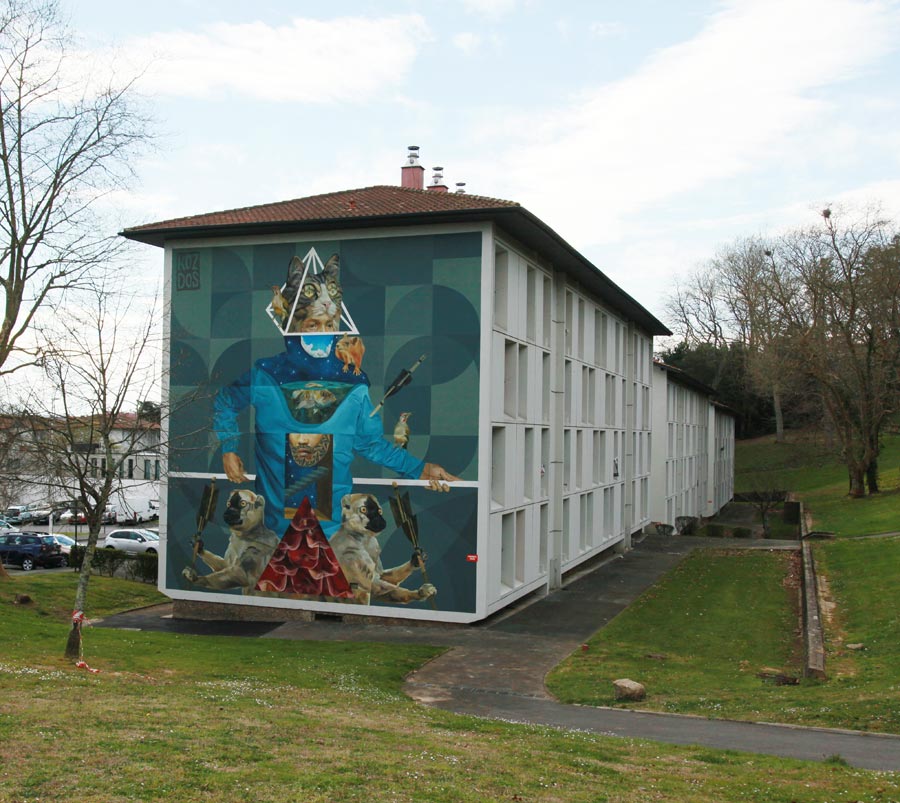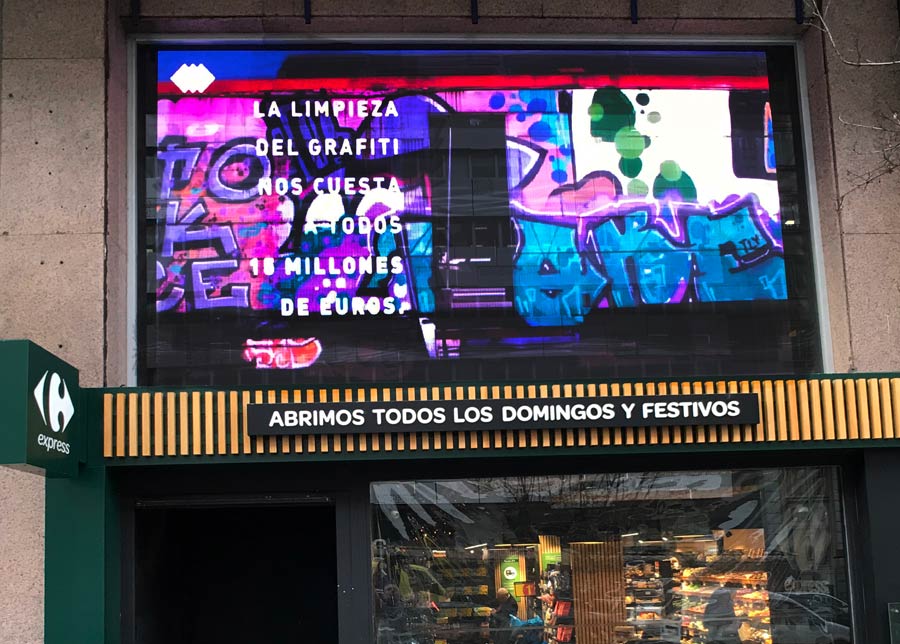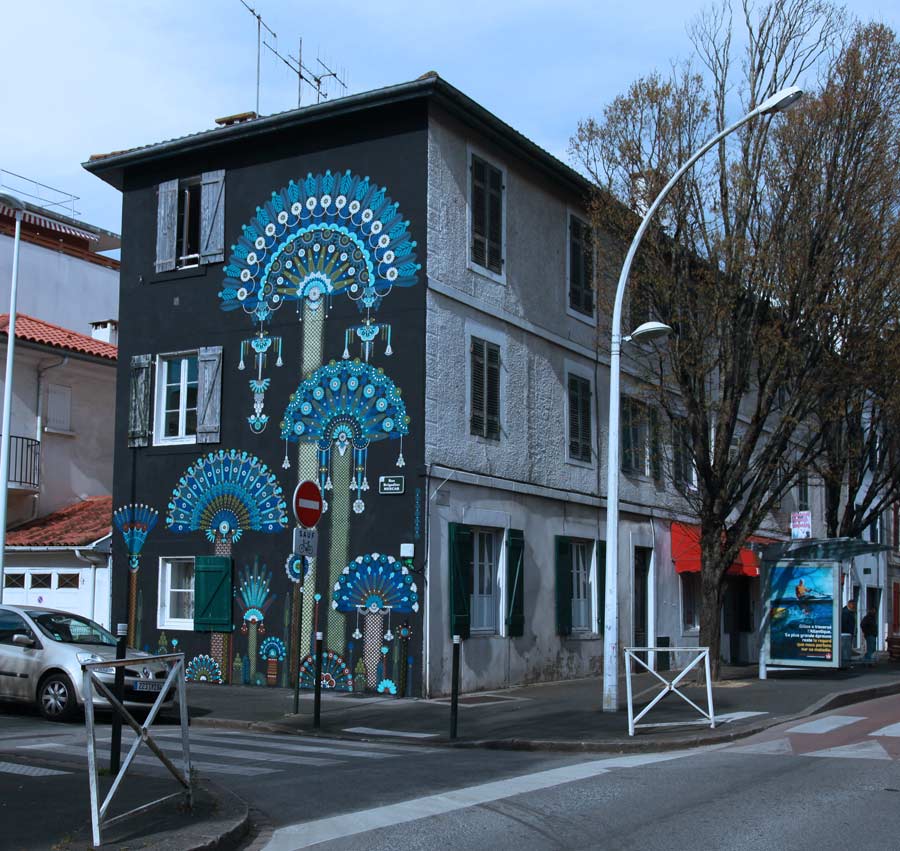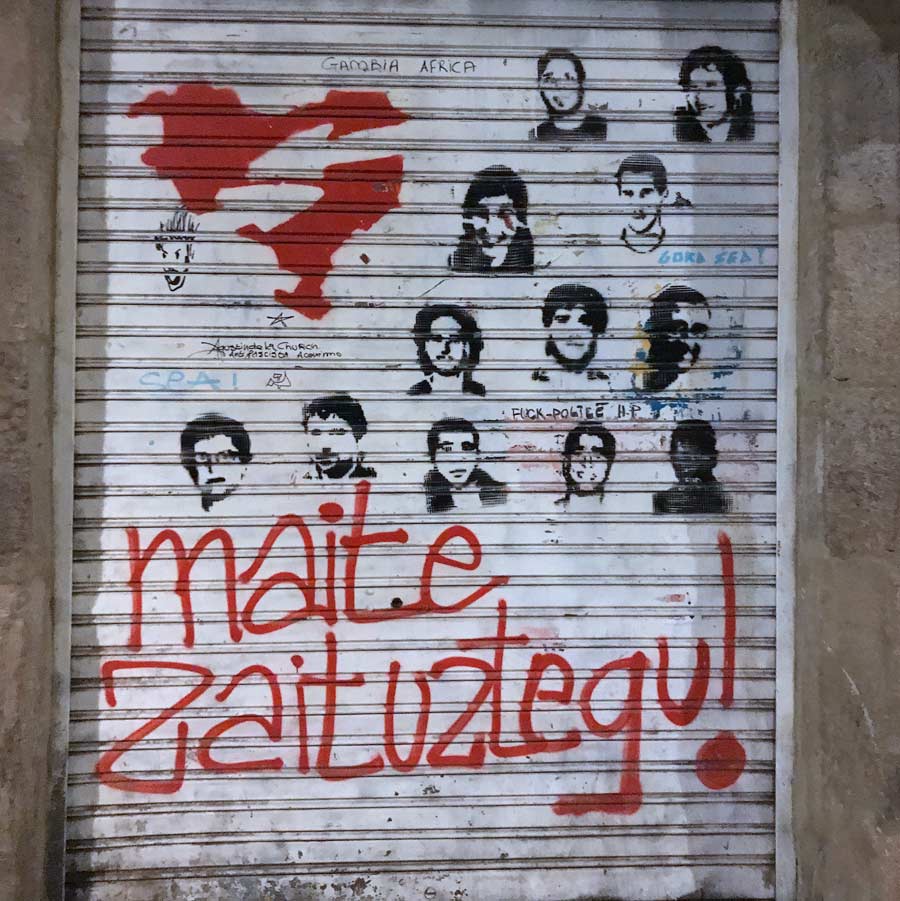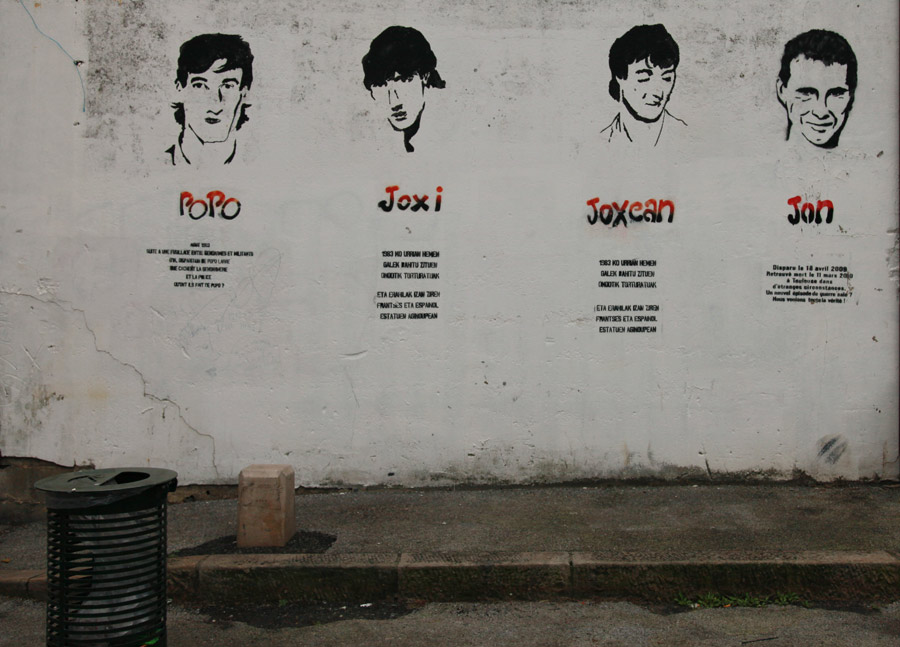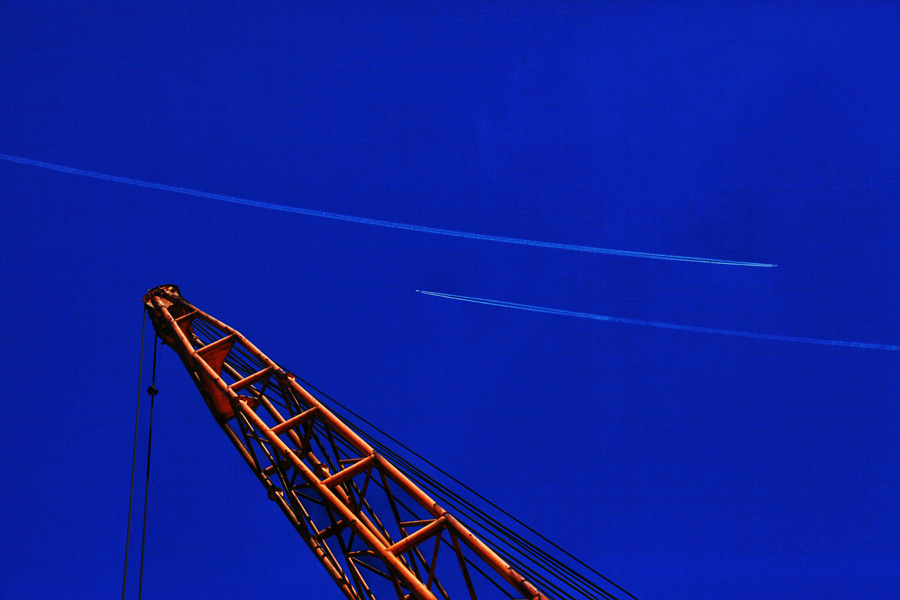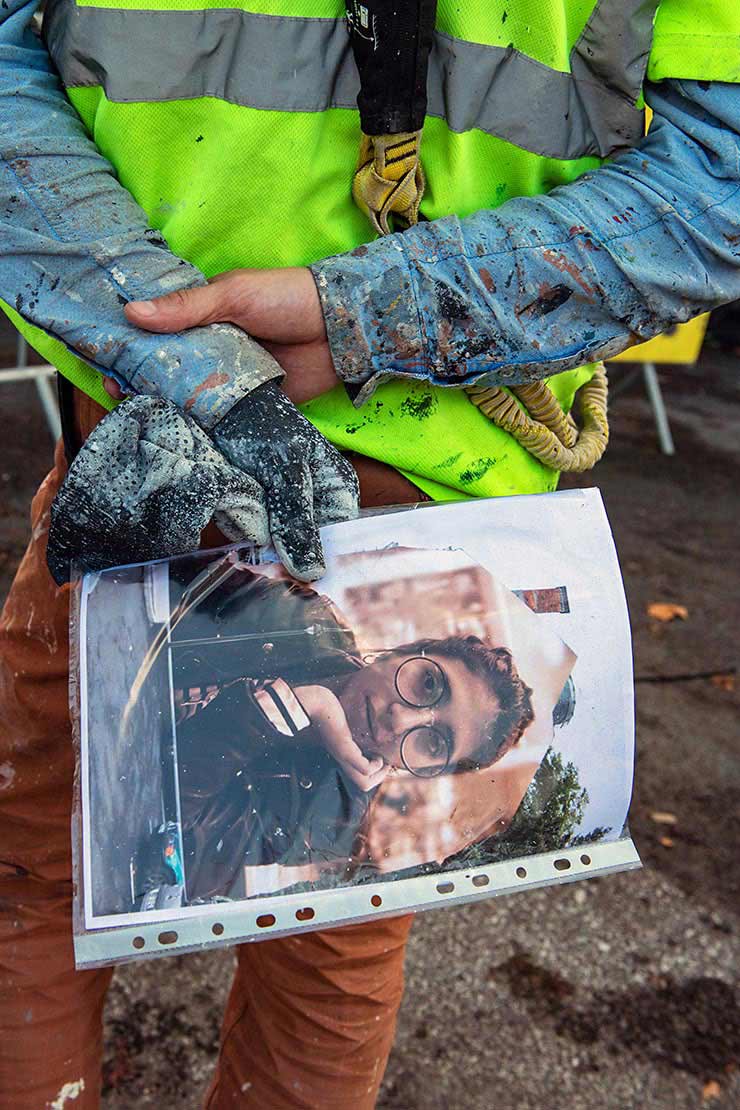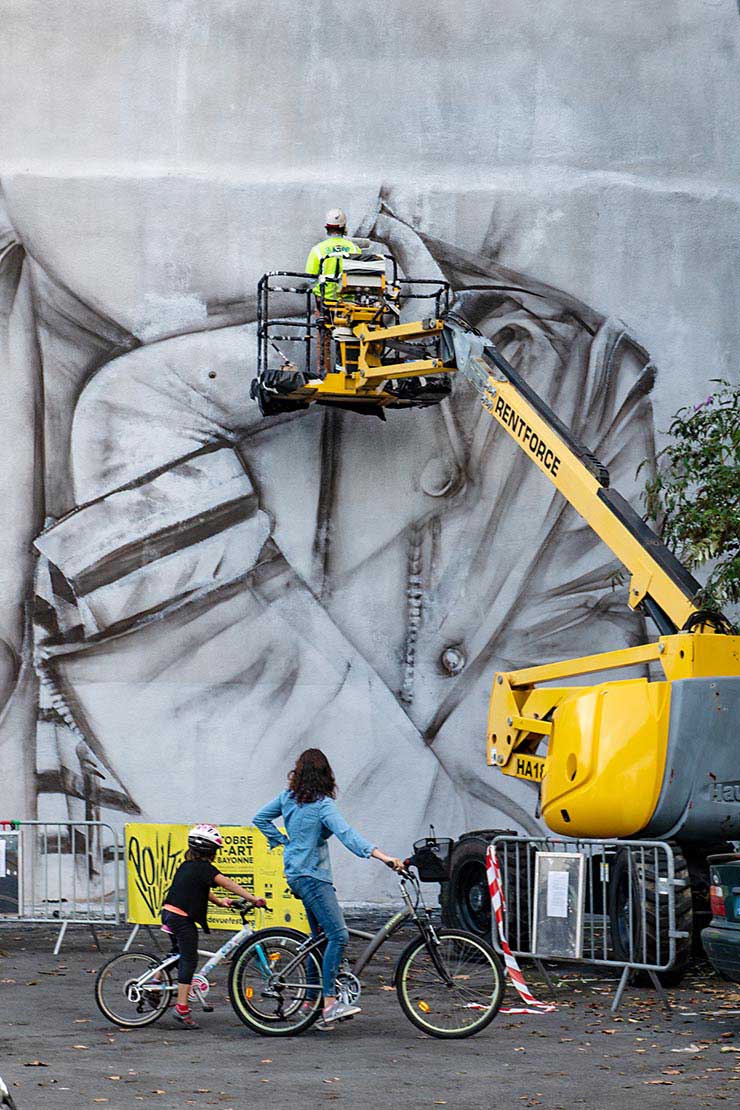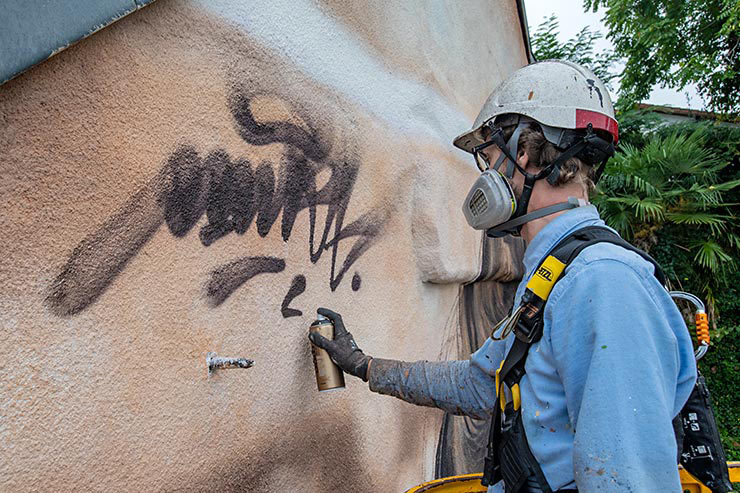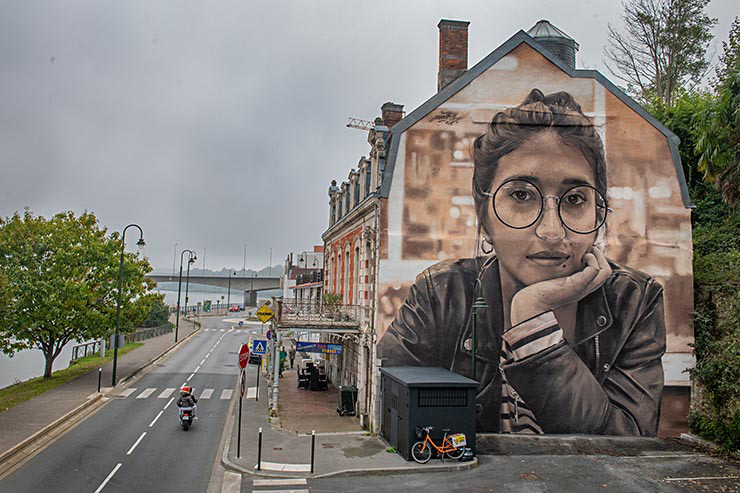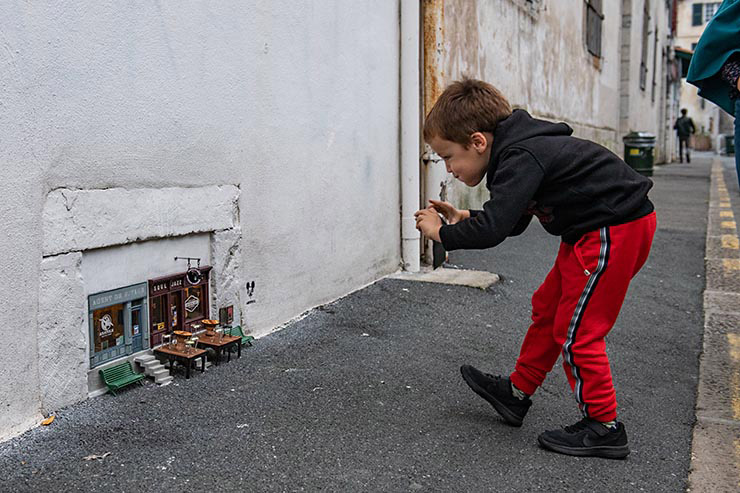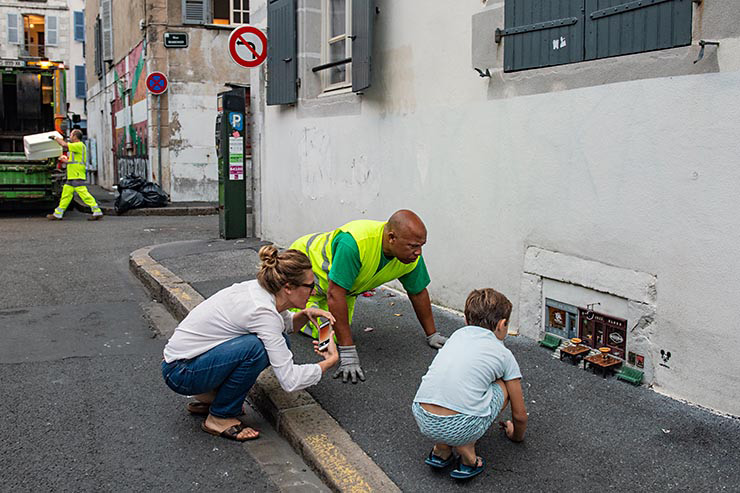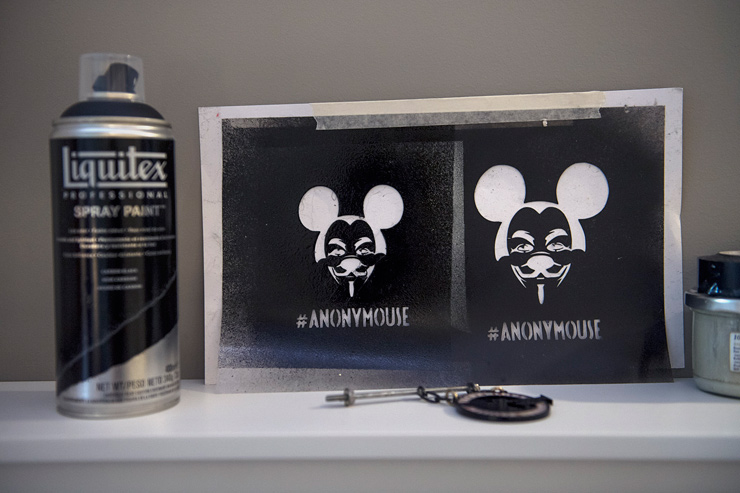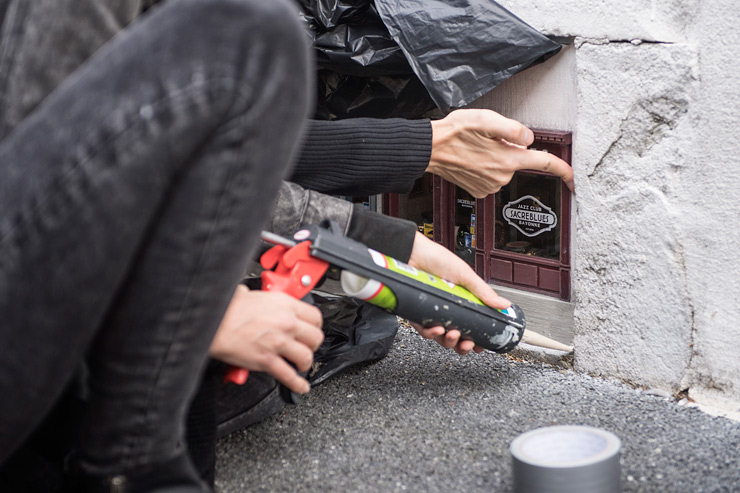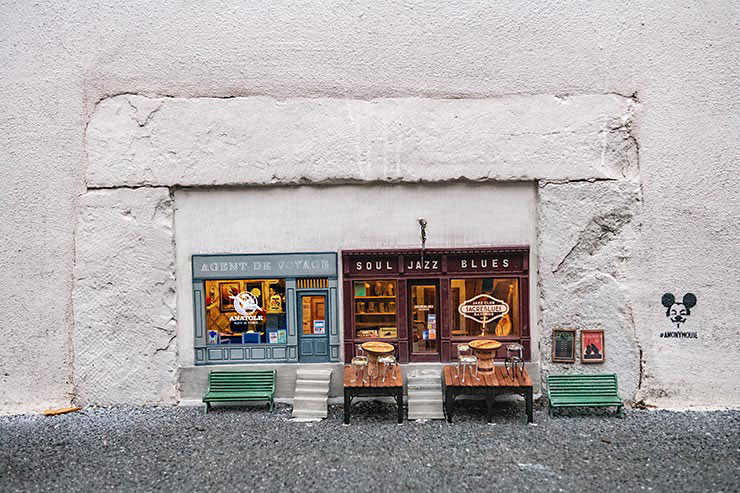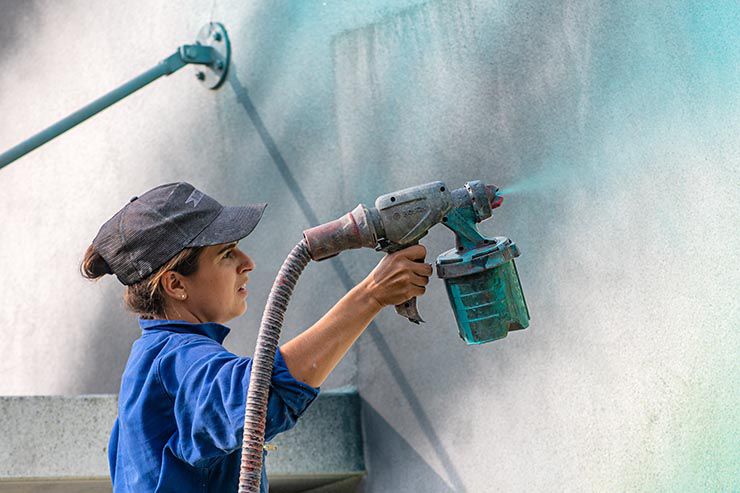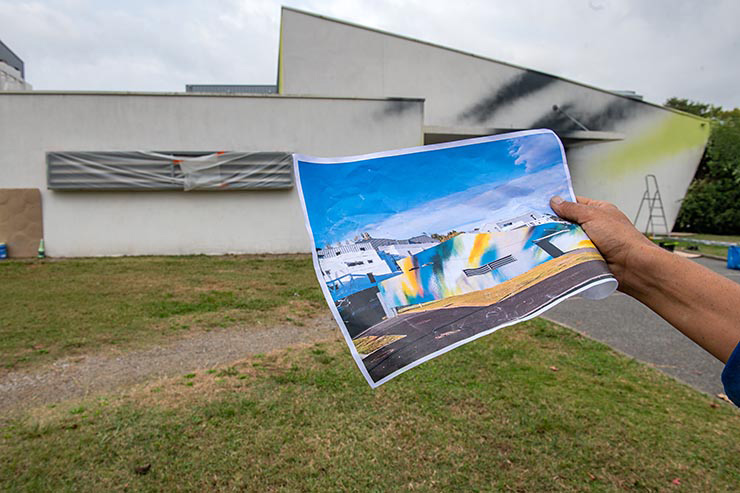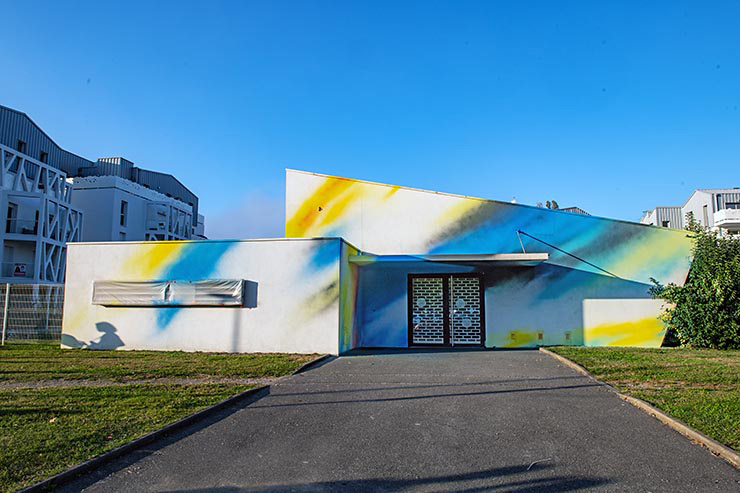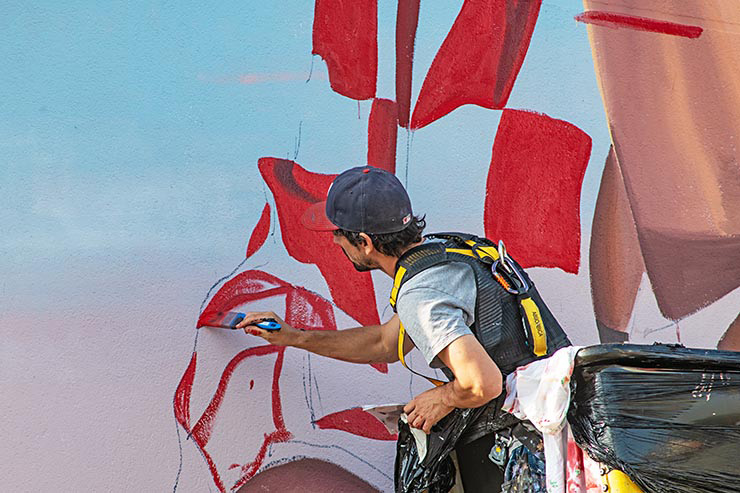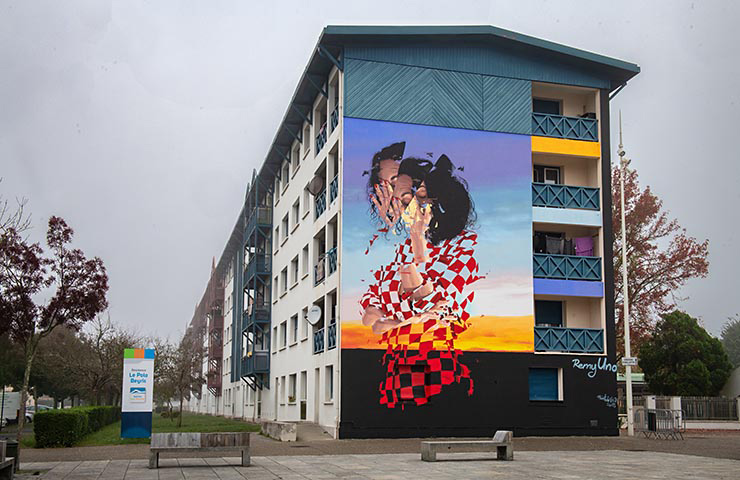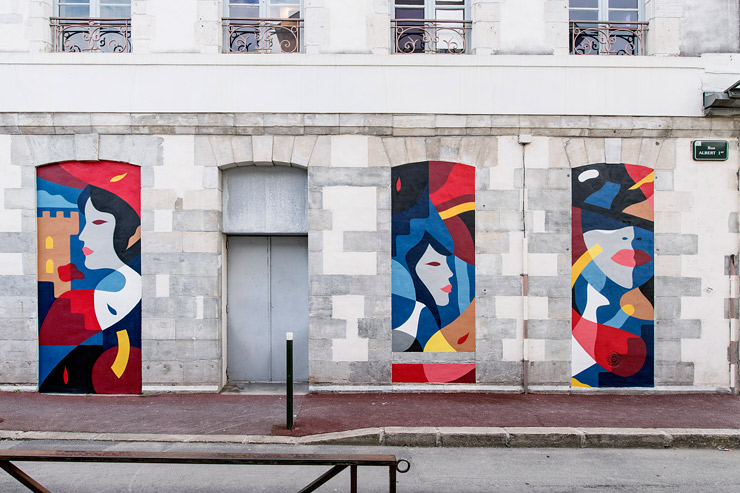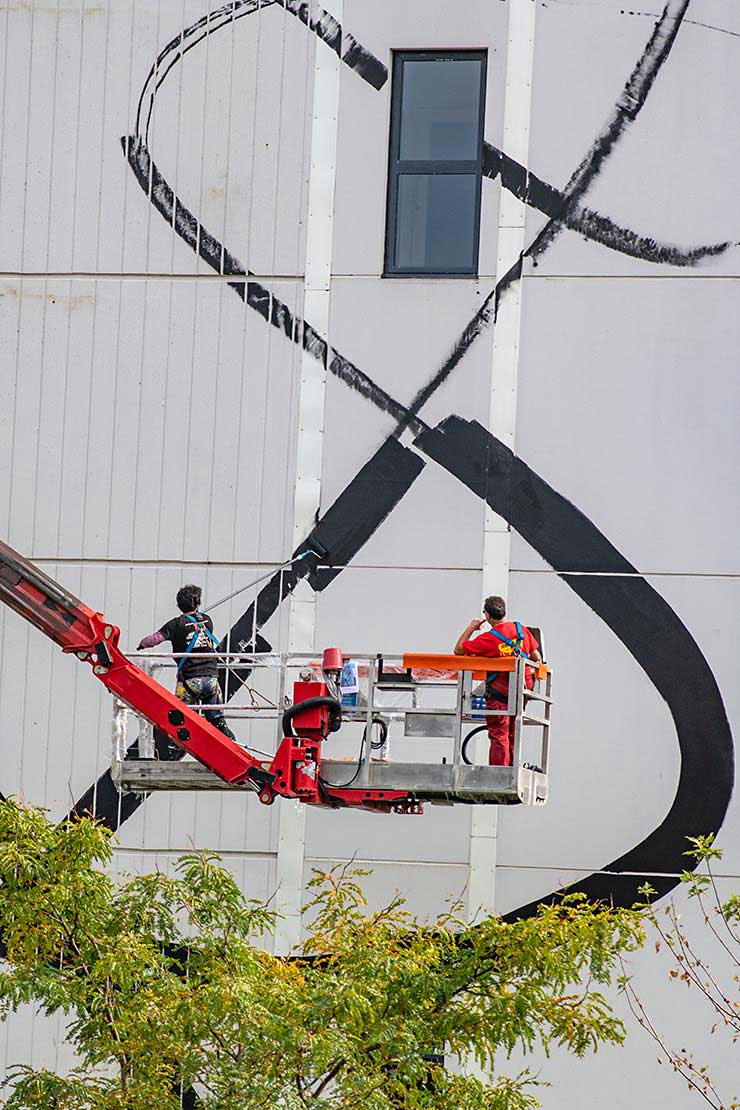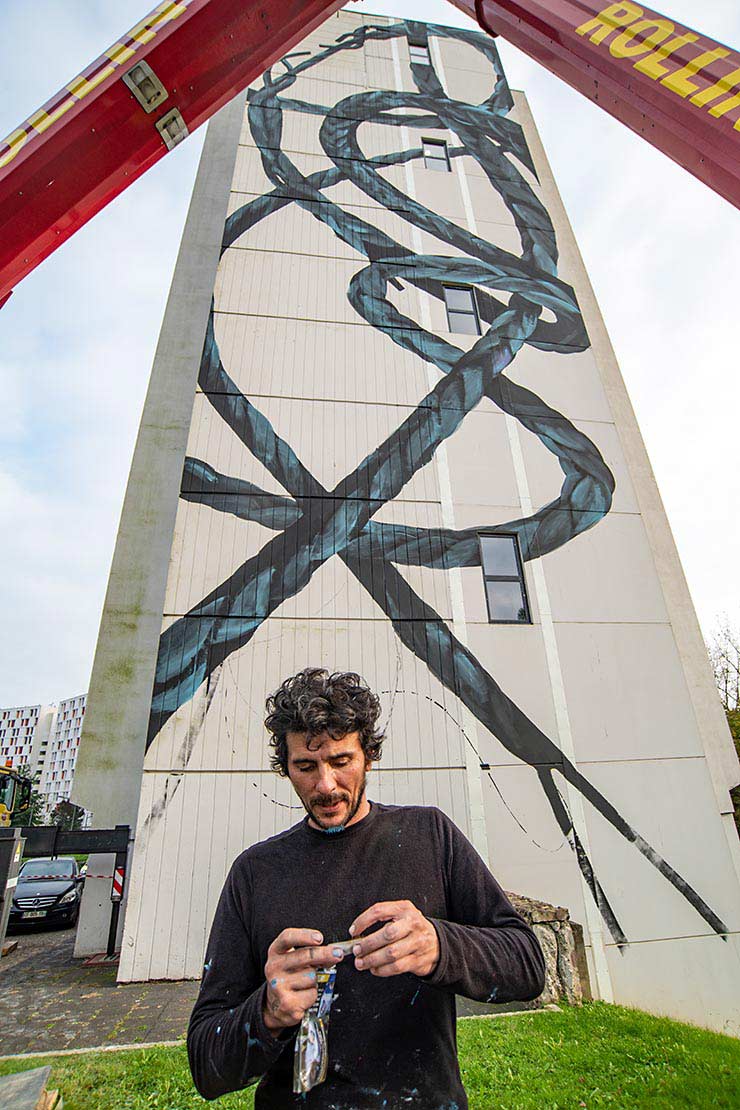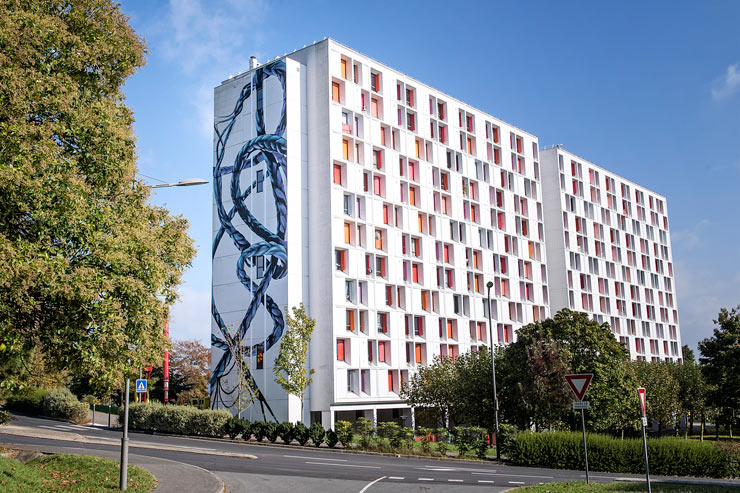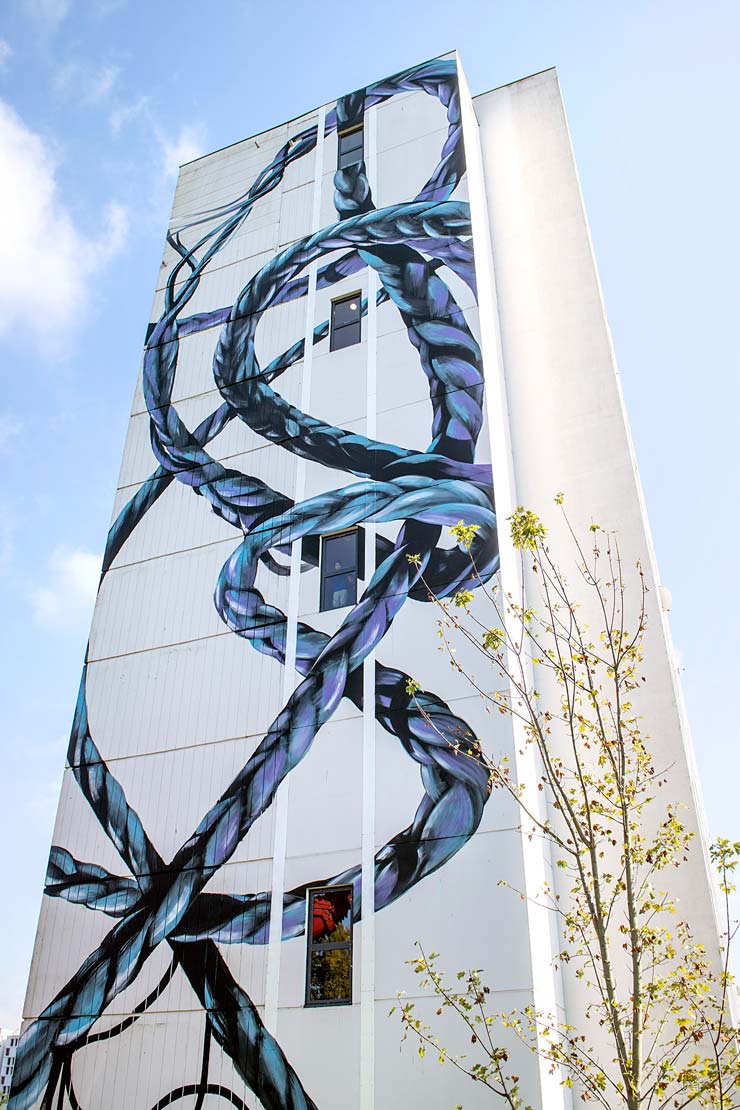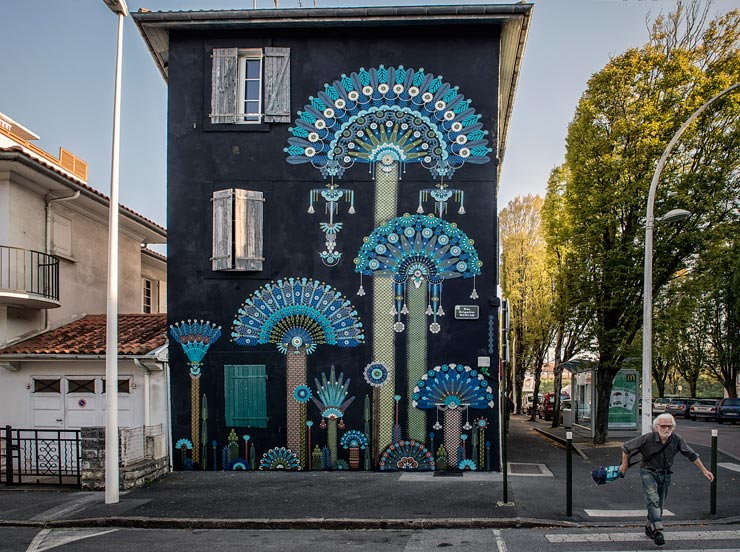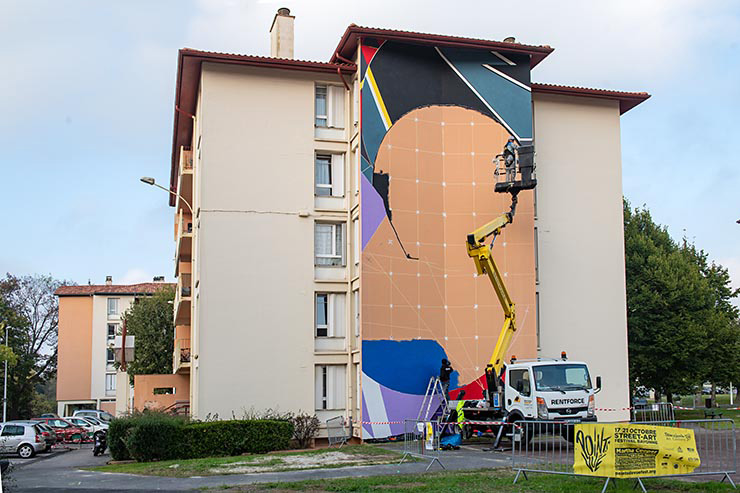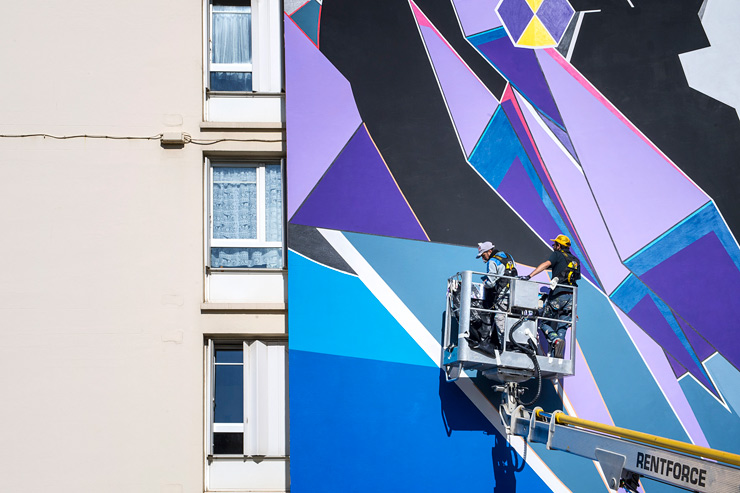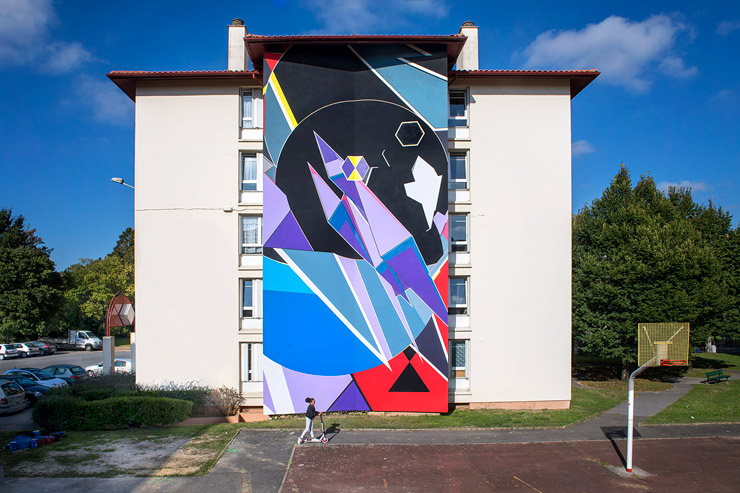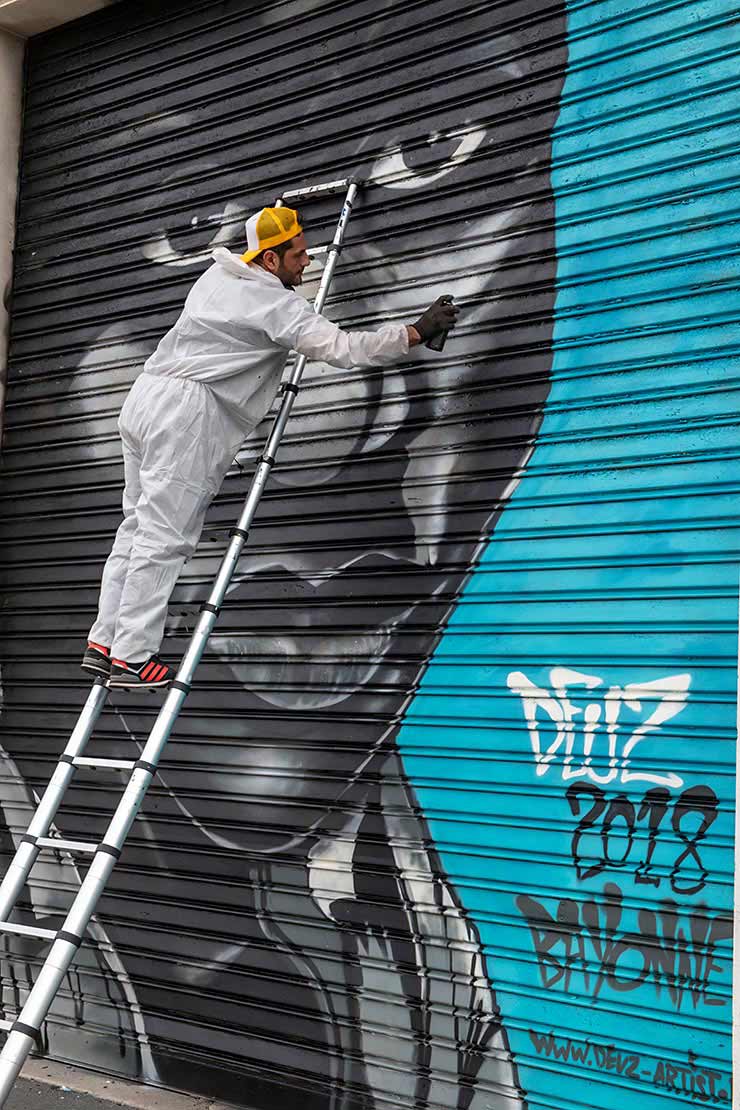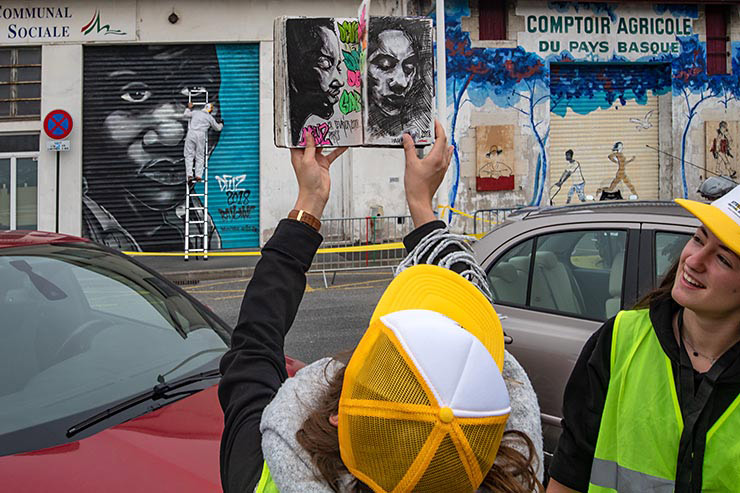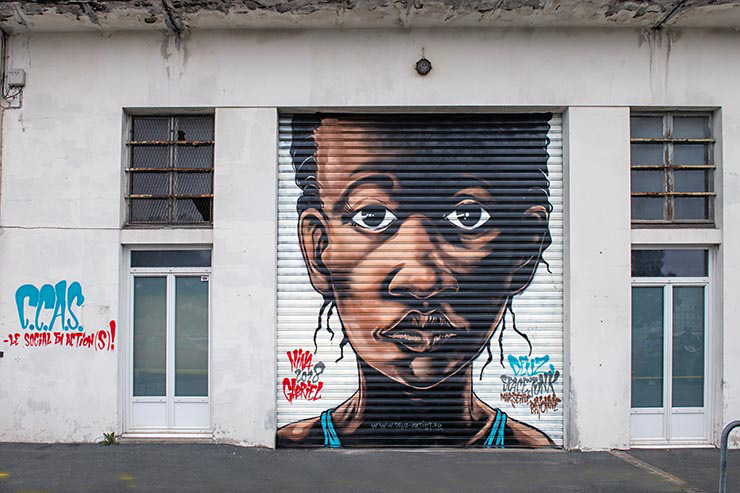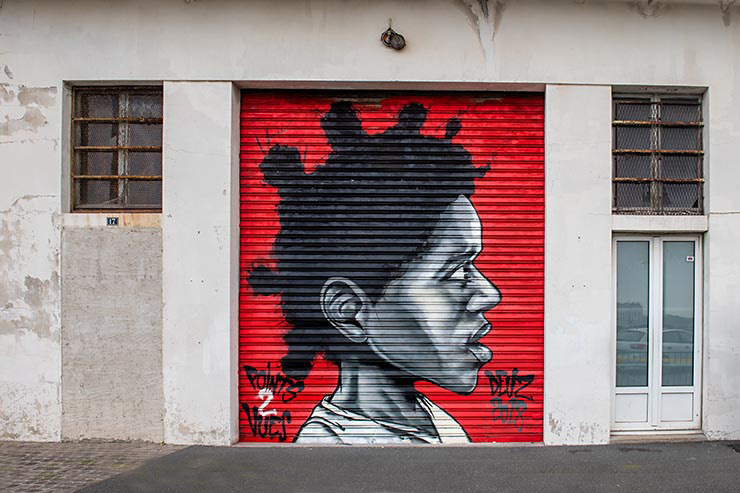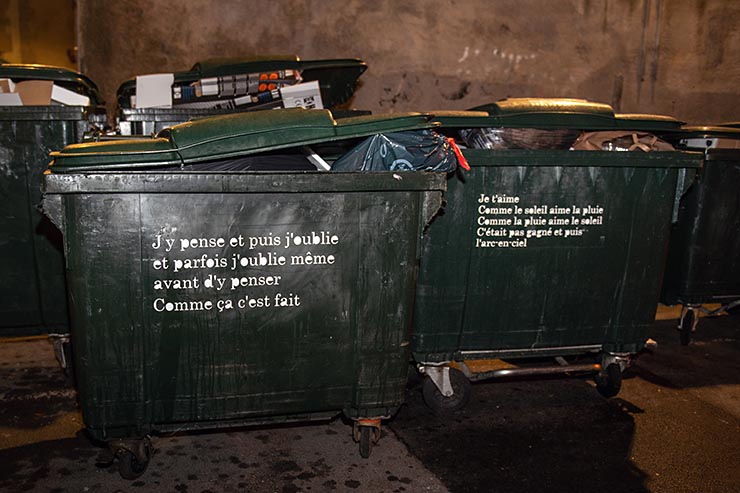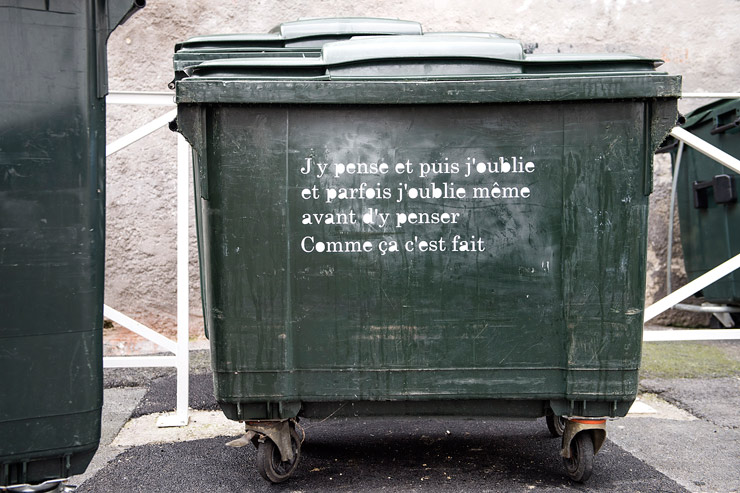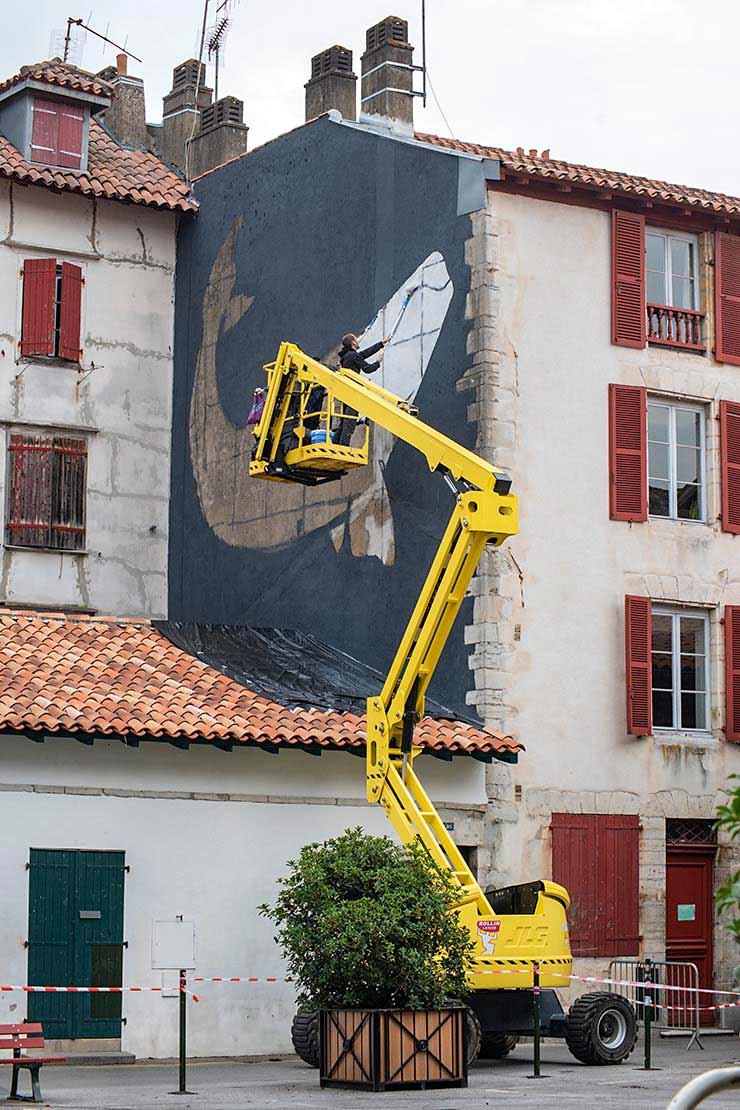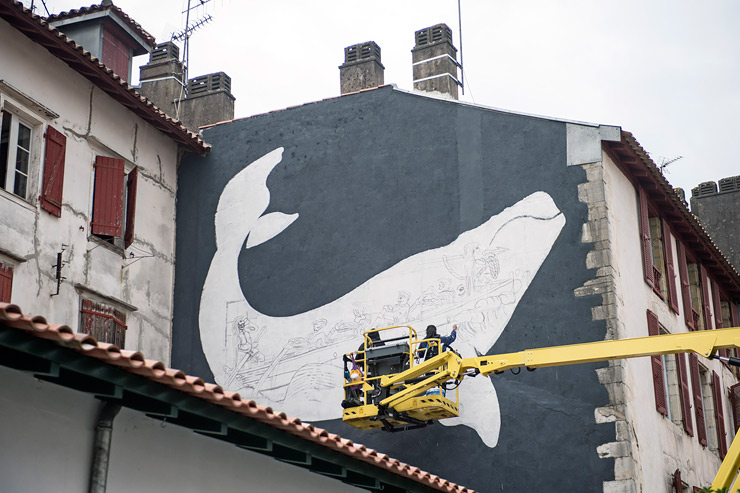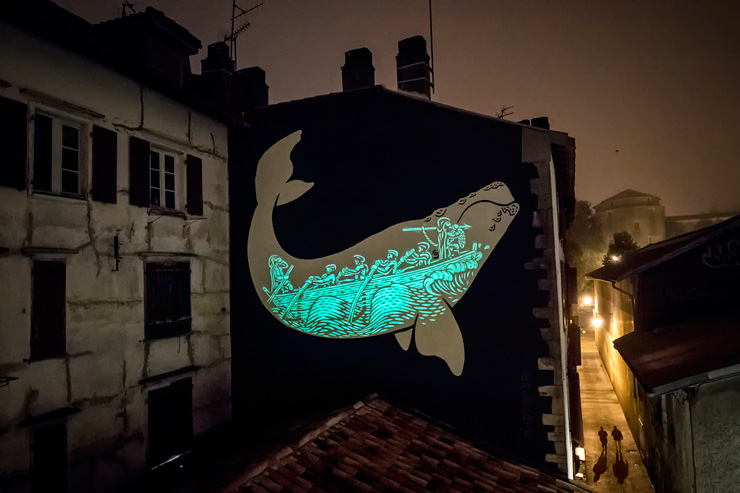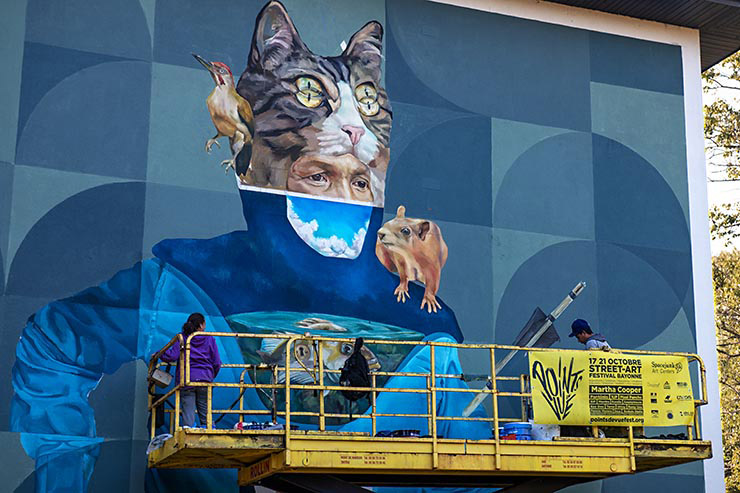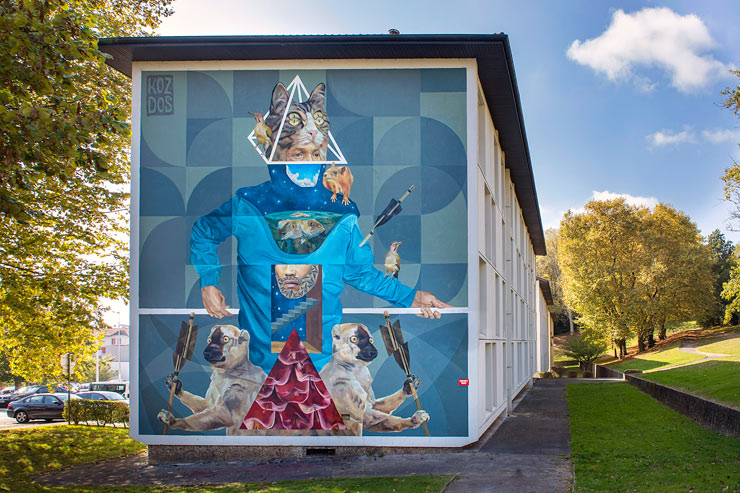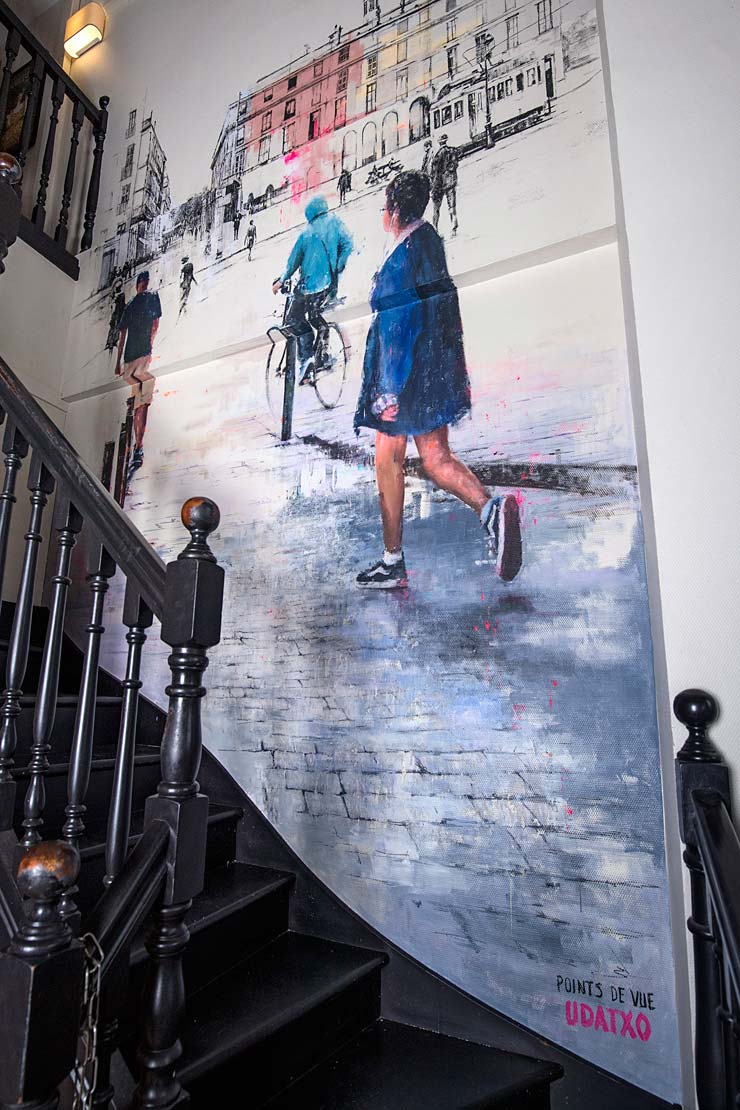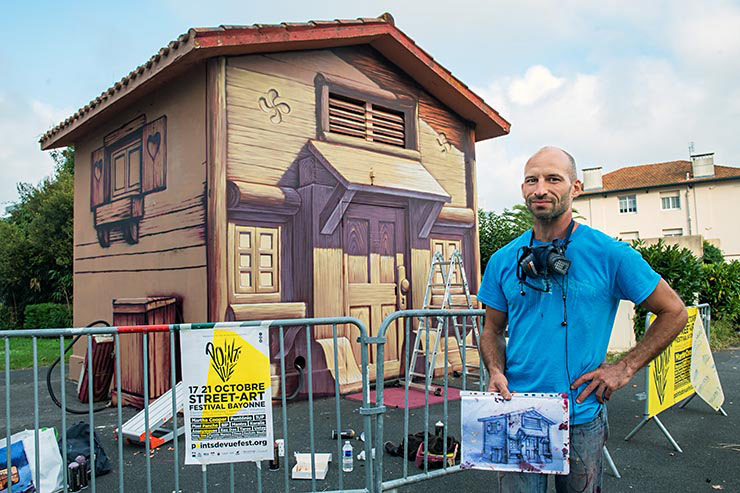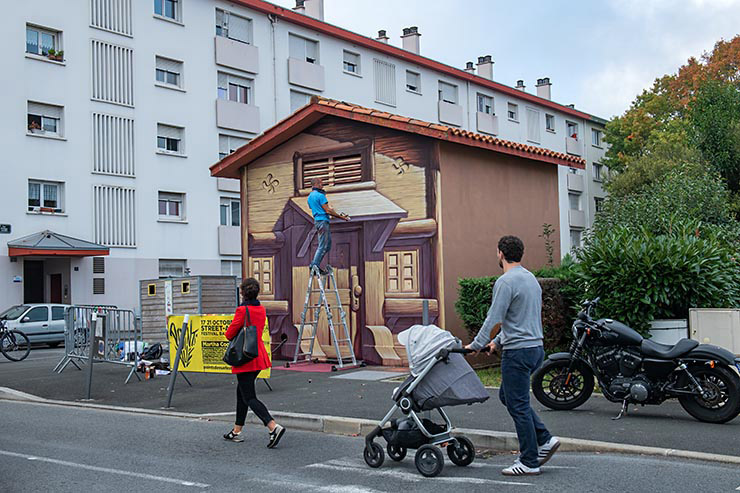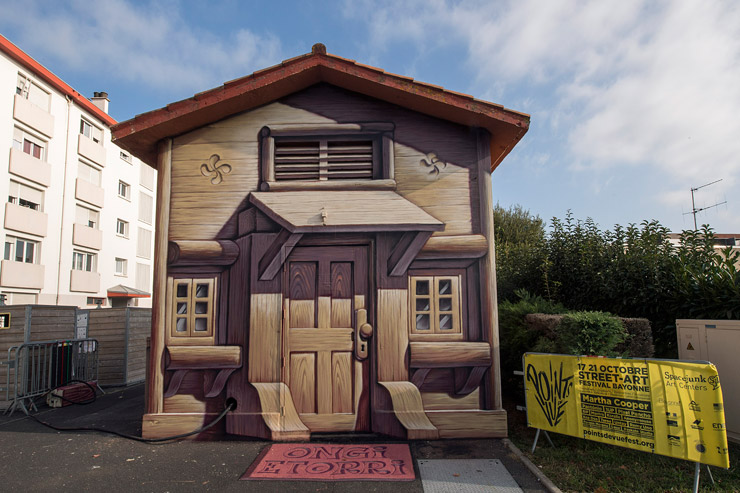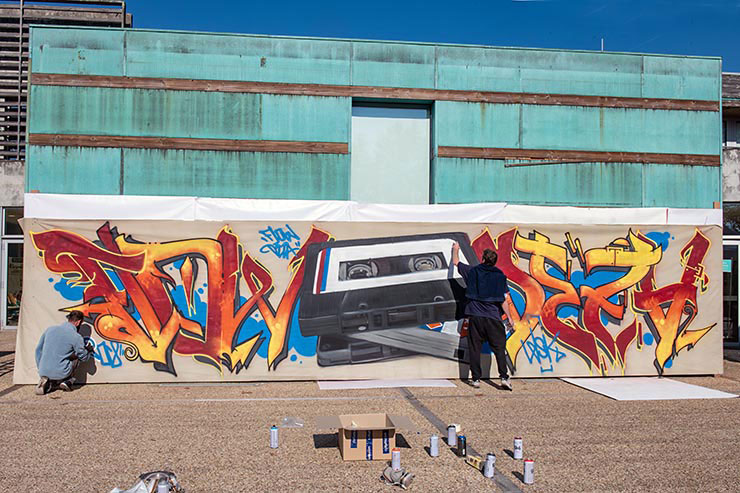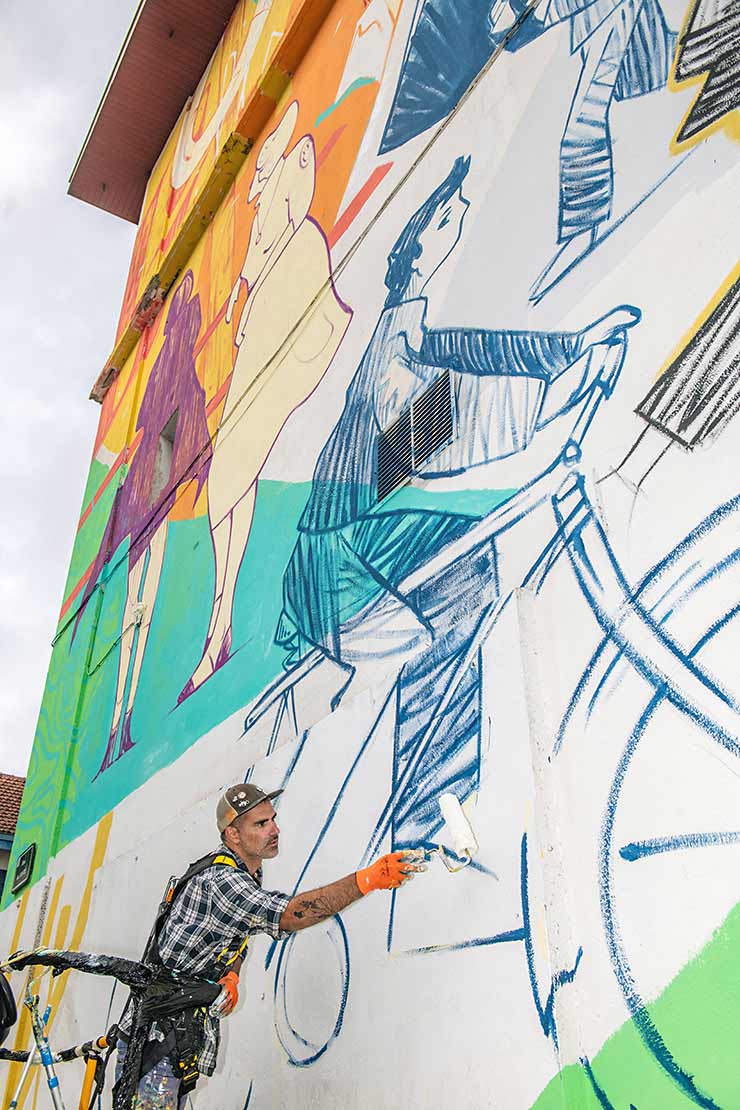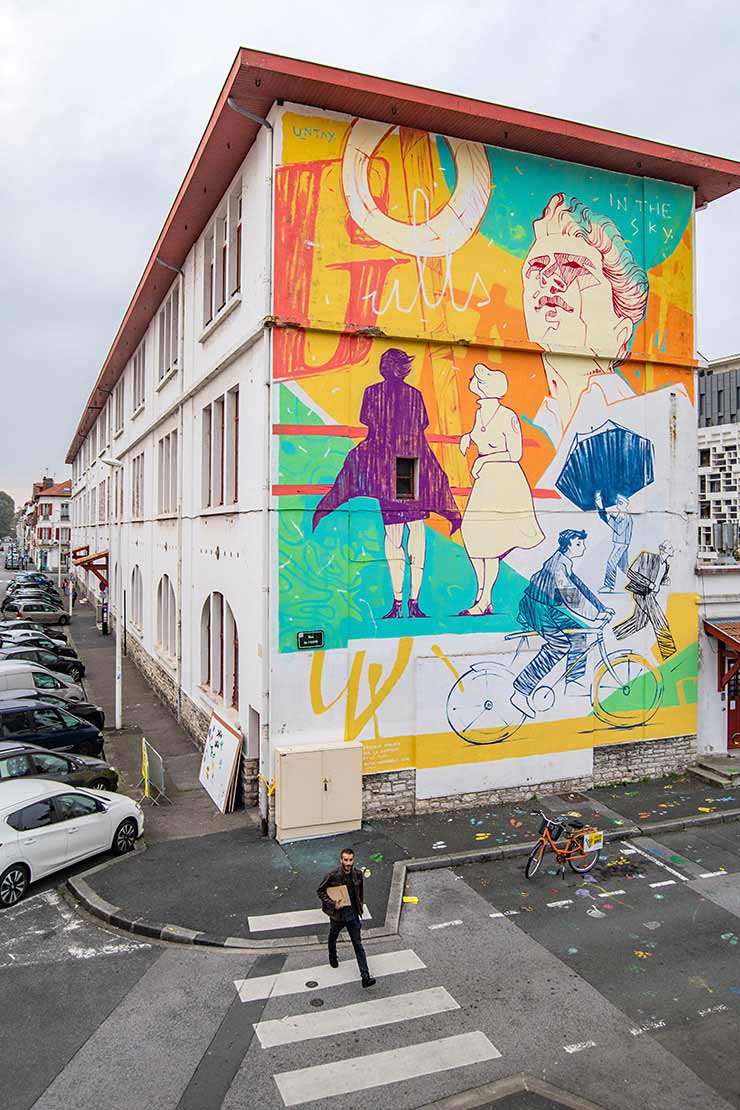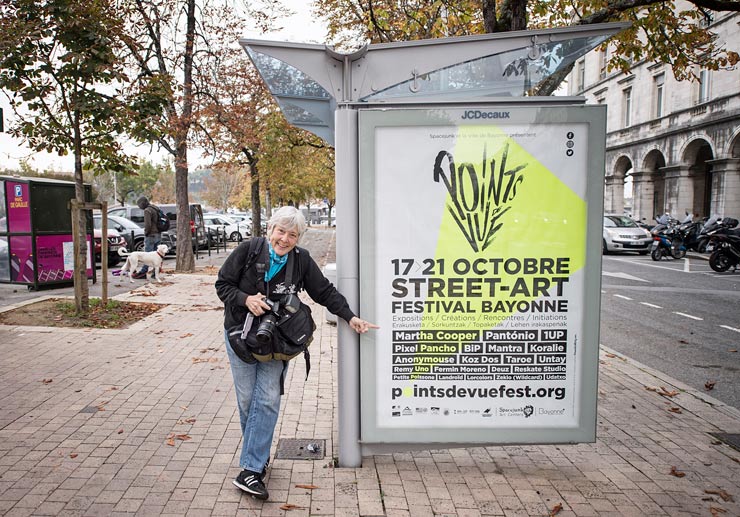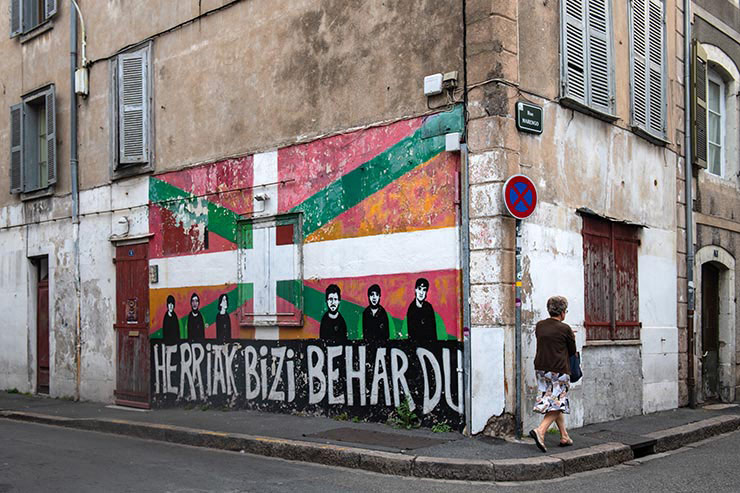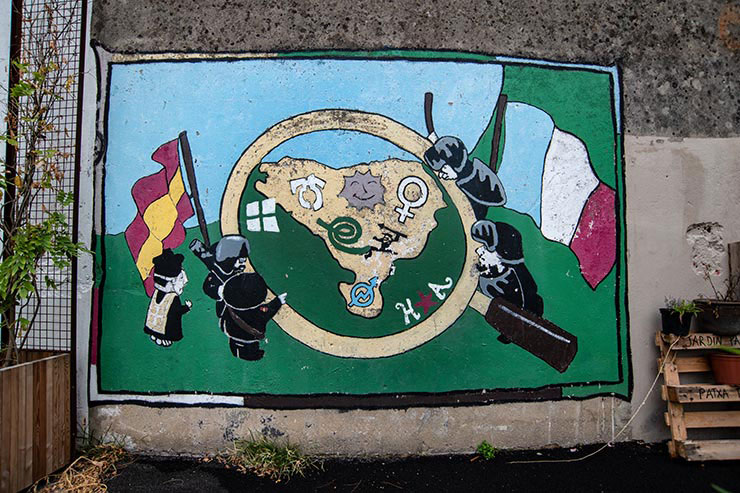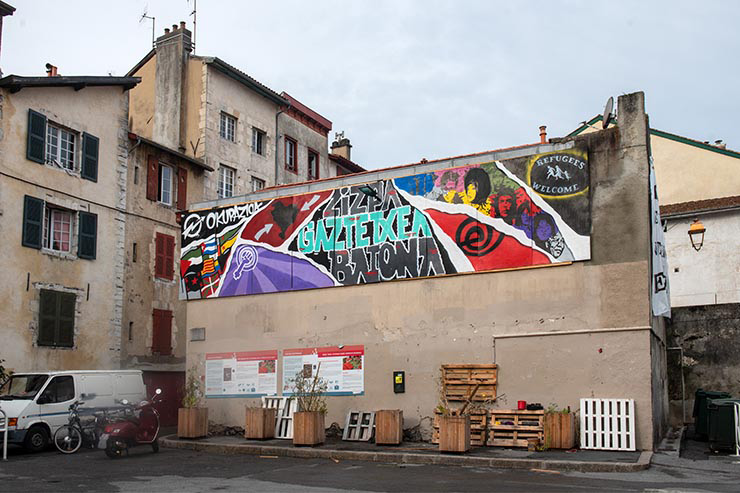Born in 1986 in Caracas, Venezuela, KoZ Dos is a prominent graffiti artist whose journey began in the streets of his hometown. His early work was heavily influenced by the local graffiti culture and his limited media exposure, shaping a style that melds urban culture with a self-discovered means of artistic expression. Over the years, Koz Dos has developed a distinctive aesthetic, integrating geometric patterns and organic forms, often cross-pollinating structured geometric elements like lines and triangles with natural, organic motifs such as flowers and animals.
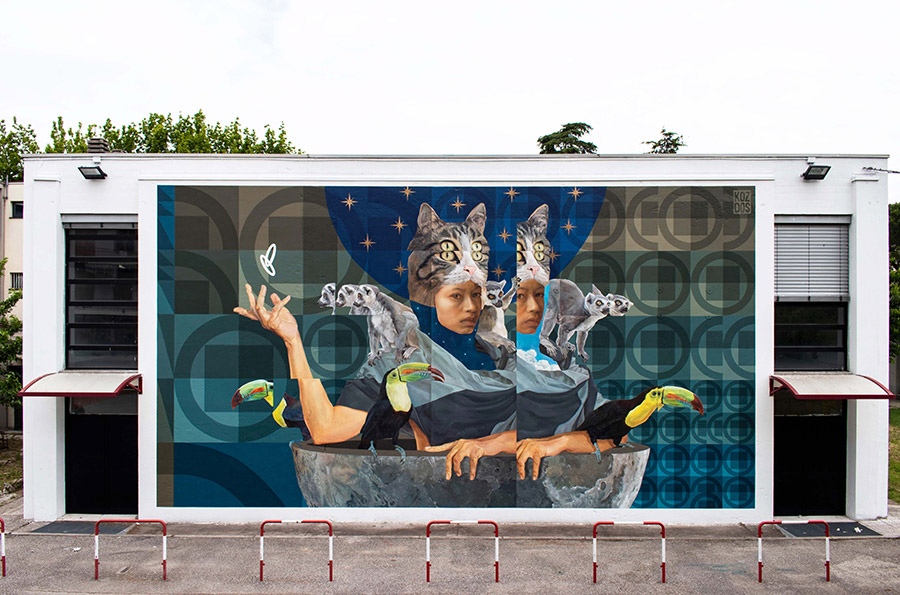
KoZ Dos’ work frequently chronicles a fantasy dialogue between human and animal figures, a silent conversation of photorealistic faces with interchangeable qualities and characteristics. His is a unique approach that not only depicts confrontation and harmony between mankind and the natural environment but also possibly invites you to reflect on broader environmental and existential themes. Blurring lines between street art and fine art, his murals often tout dreamy, creamy colors and suddenly appearing geometric patterns.
A graduate of UNEARTE, the Arts University in Caracas, KoZ Dos has participated in many exhibitions in Venezuela and abroad. His works adorn walls in cities such as Berlin, Paris, Madrid, Barcelona, Quito, and Tel Aviv. His philosophy appears to center on creating art that is accessible to all, fostering unity, respect, and reflection. Through his quizzical magic and large-scale murals, KoZ Dos inspires and provokes thought — and he solidifies his place in the global street art scene.
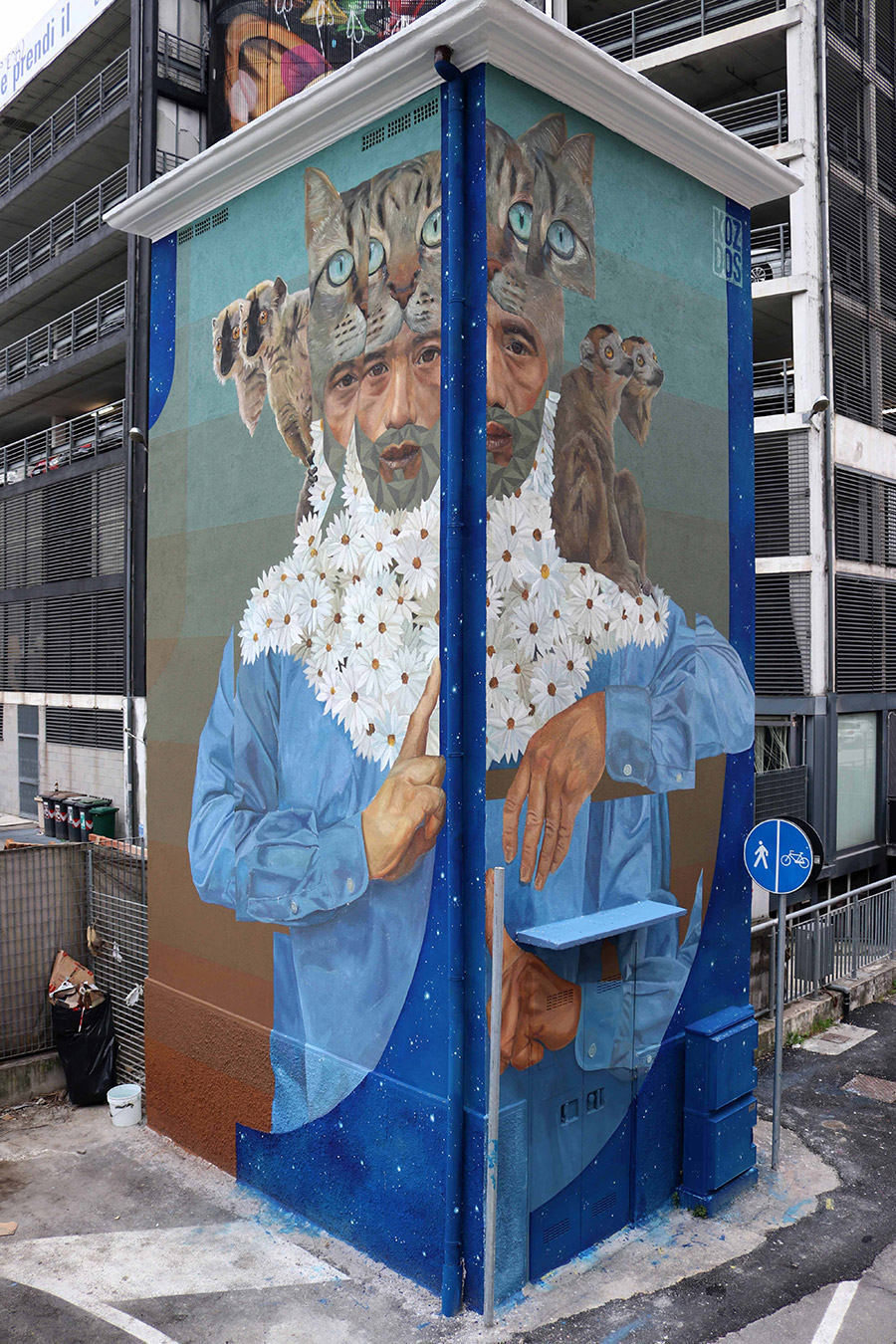
We spoke with KoZ Dos in a wide-ranging interview below, in which he speaks of his artistic journey on the streets of Caracas, his unique blending of geometry and organic forms, and what fascinates him about his interplay with human and animal figures.
Brooklyn Street Art: You began as a graffiti writer in Caracas. Were you part of a crew?
KoZ Dos: Yes, my beginnings were in the streets of Caracas. I started as a graffiti writer painting what, for me, was graffiti at that time. Given that I am geographically located far from important cultural centers like the United States and Europe, Latin American graffiti was what I had the fortune to practice. I dabbled in the style of graffiti that I saw and understood. Internet access was limited then, and my exposure to graffiti came from what I saw on TV, like music videos. I absorbed my knowledge from what I saw around the city and on the highways, from tags and pieces by other writers. At that time, graffiti and hip-hop culture were not very popular or accessible in my environment. Everything changed significantly with the arrival of “HipHop Nation” magazine. The magazine had a section dedicated to graffiti, showcasing global graffiti to inspire and immerse myself in the culture. I got caught up in graffiti culture at a very young age. When I took the initiative to go out and paint on the street, I was a teenager. Initially, I painted alone, but after a while, I met other writers who were also painting. We became good friends and painted together. It was a good experience because I learned many things in general, such as painting in crews such as CUC, ASP, and ABR.
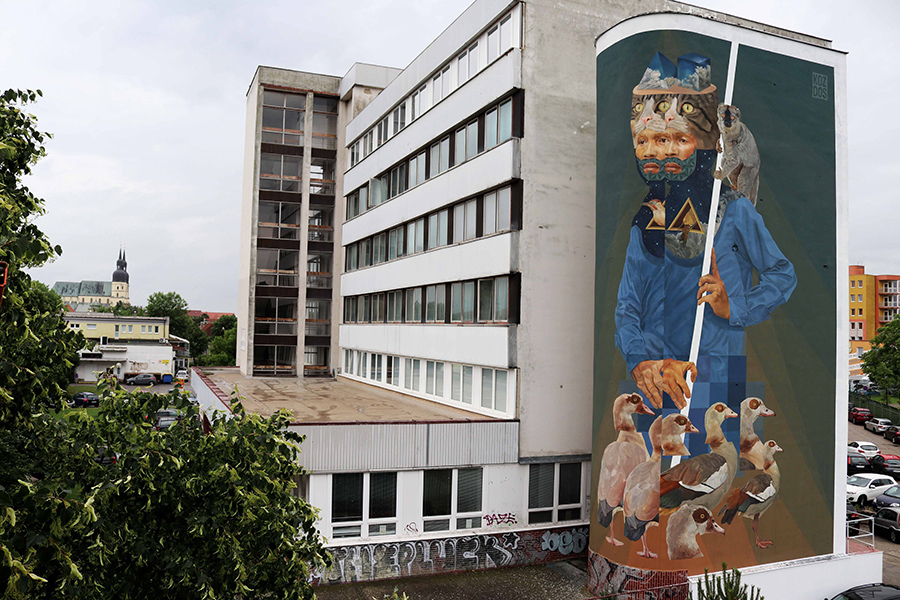
BSA: What inspired you to become an artist?
KoZ Dos: Since I was a child, I liked art. I didn’t understand it then the way I do now, but when you like something, and it draws you in, you go at it without explanations. My dad inspired me to be an artist. He wasn’t an artist by profession, nor did he describe himself as an artist by today’s standards, but he was very creative and crafty. He created incredible things that inspired me and taught me a lot. For some people, being creative comes easily, and they are self-taught. That’s my father. Indeed, there’s a strong artistic vein in my family, and I have accepted it and followed it with pleasure.
BSA: You tend to work in large-scale murals. How do you approach each wall? Does the context and the city influence your composition?
KoZ Dos: Interesting question. Each project is different. I usually consider the technical, conceptual, and general aspects at the beginning of each project. I consider the type of wall, texture, location, and where the sun rises and sets. It’s important to know when the wall is exposed to direct sun and when it is not. This way, I know which sectors will be worked on at certain times of the day, especially when trying to match the colors with the color palette on the sketch. Regarding the concept, I focus on context, the city, and its characteristics. I establish a relationship between myself, the art, and the viewer. The locals need to take ownership of the art as I seek to establish harmony and invite reflection and dialogue. I respect the space and its surroundings, and my goal is for the art to be accessible to the viewer.
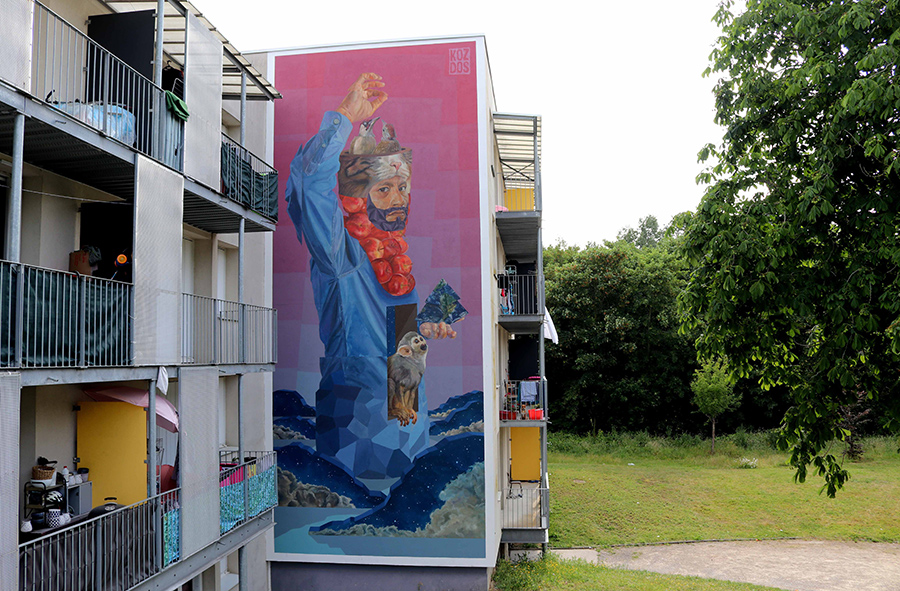
BSA: It is natural to mix geometric compositions with organic forms, like flowers (daisies). How do you manage to balance those two elements in your work?
KoZ Dos: Since my beginnings, I’ve liked geometric shapes and graphic elements, although I love volumes, lights, and shadows. Color planes and geometry always caught my attention. When I started painting in the street, geometric compositions were not so relevant. I used geometry but without giving it the importance it has in my work today. As the years went by, I became more open to exploring geometry in my work. The thoughtful, analytical, and clean nature of geometry is something that I like. As I got deeper into my work and gave more importance to the background, I understood that the background is as fundamental as the form. I’m fascinated by the concept of color, and using it in my work helps me explore the combination of geometry, forms, and nature. I think my ethnic background, which I have been aware of since childhood, is reflected in my work, research, and artistic output.
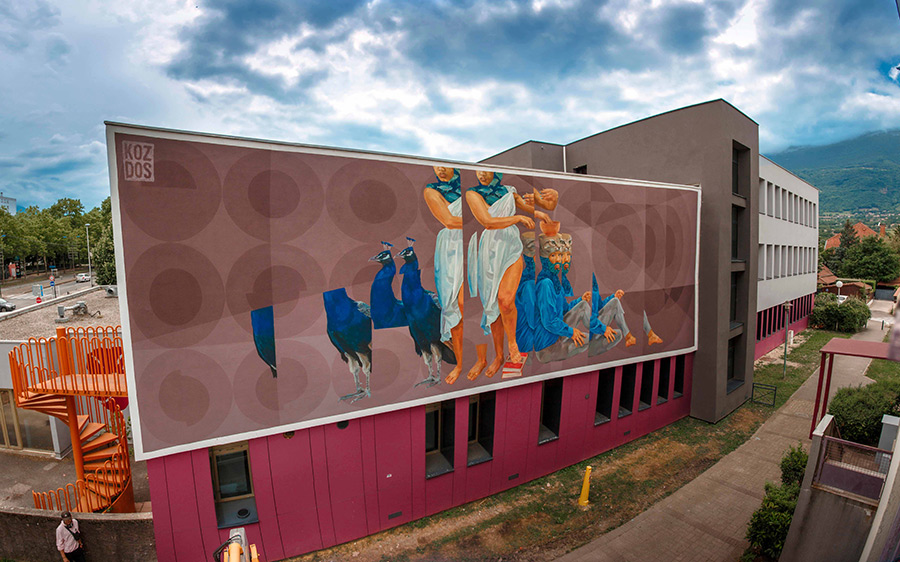
BSA: Animals and humans are recurring themes in your work. The way you present them goes beyond pure interaction; it’s more like an inception. Do you have to go through multiple sketches to get to the concept you have in mind, or once the concept is formed in your mind, do you translate it to one sketch and then onto the wall?
KoZ Dos: Interesting question. I usually work without asking myself questions or questioning or passing judgment on my thoughts when creating. Art is a sincere act, especially when it comes to personal work and research. My creative process is spontaneous and intuitive; I am not analytical here. Animals, shapes, and forms arise in my mind without questions or reasons. Then, I look for compositional harmony through the interaction of the elements. I intuitively add or subtract from the work if the idea suits me. No matter the type of element or how illogical it seems, I integrate it if I think it is needed. I draw inspiration from everything that surrounds me, but above all, from Nature and its power. The idea for the piece is one of my favorite parts. It is a dance, a connection with something greater than myself. It is the fortune of making something intangible tangible, materializing something non-existent through art. For me, it is one of the most important parts of creation. Thank God I am fortunate to make art and create ideas.
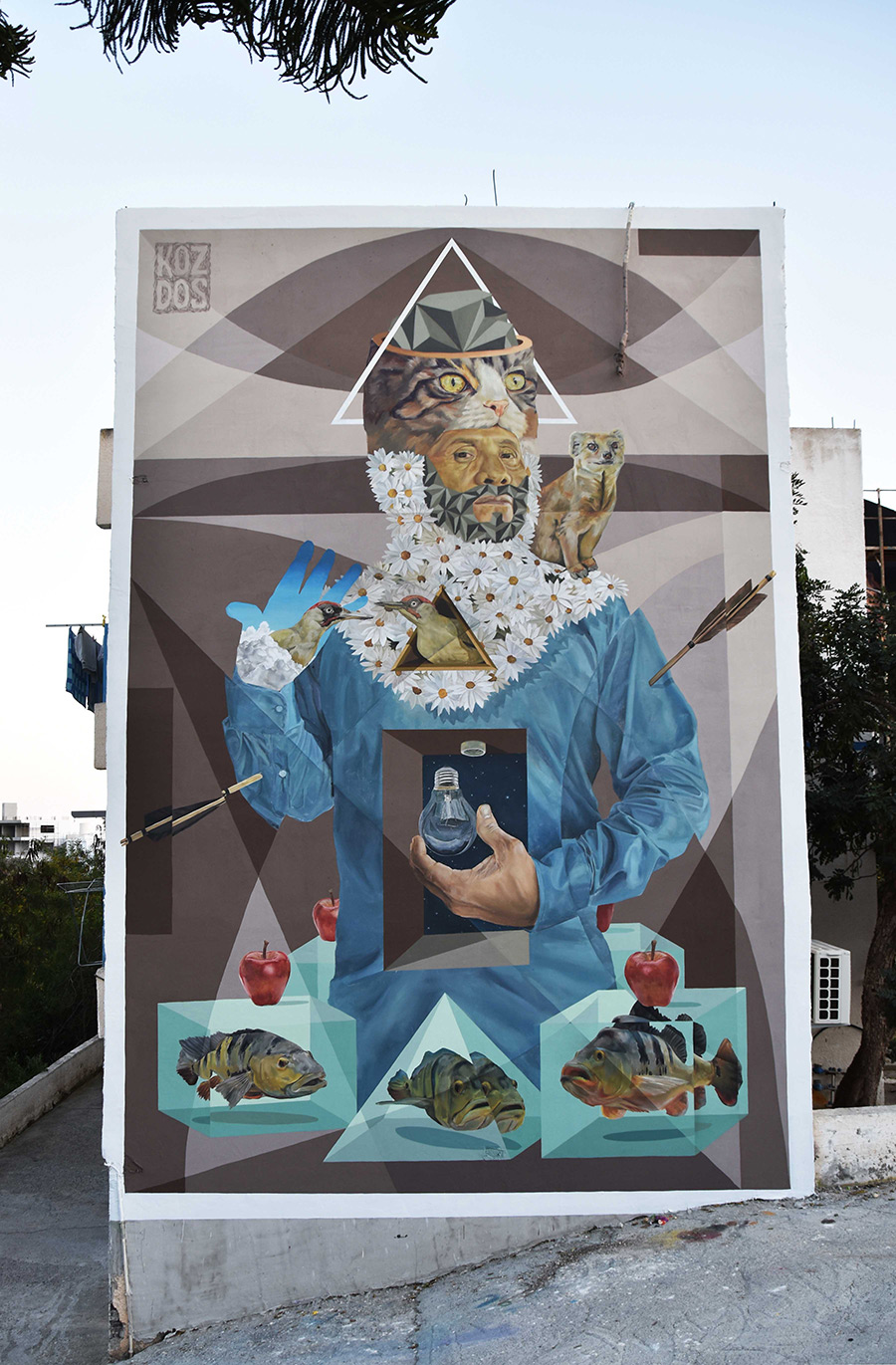
BSA: Climate change and its implications are ever-present in the news. Is that something you pay attention to when seeking inspiration in your work?
KoZ Dos: The damage is done, and if we continue like this, our self-annihilation will be faster than expected. The most ironic thing is that the Earth will continue its course as it always has; I am in danger, not it. Climate change does not inspire me; it worries me. It is inspirational to provide a message of unity, coexistence, and respect. I aim to convey a positive message that helps prevent these issues, especially for the little ones, as they are the future of our beautiful home called Earth. Seeing all this, you could say that three factors move me to do everything I do: firstly, art; second, giving access to art to all people regardless of age, color, ideologies, sex, and status; and third, giving a positive message that invites unity, respect, and reflection.
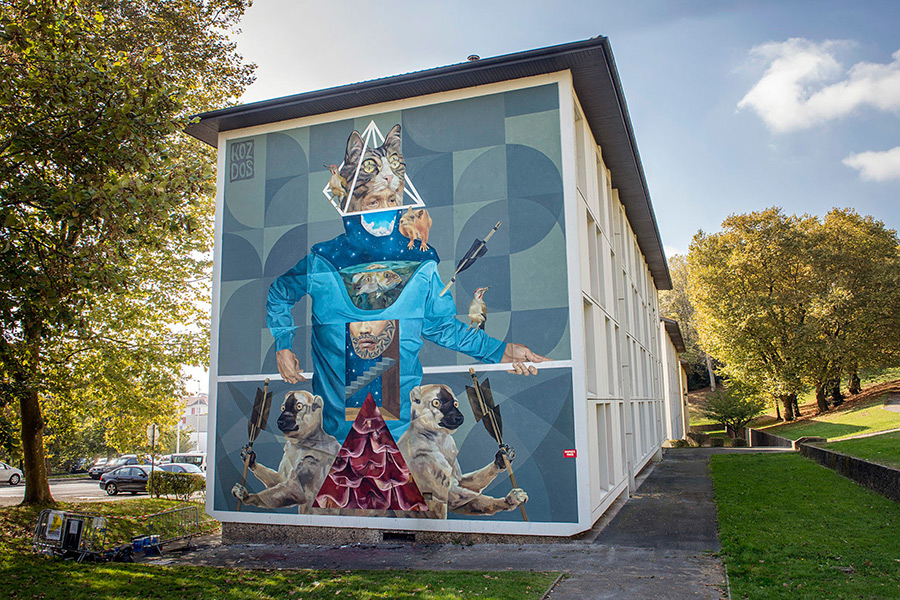
BSA: Your style is unique. How has it evolved throughout your career?
KoZ Dos: I think that because I didn’t put labels on myself from the beginning or try to get somewhere specific, I allowed myself to let the work feed on itself and explore things that I hadn’t considered. Knowing how to listen gave me a glimpse of what could be done. Looking back, it’s interesting because when you like something, you like it. No matter how much I wanted to do something different, fate reminded me that I was a painter. I started writing graffiti at a very young age. After spending several years in graffiti and painting letters and cartoons, I became more interested in figurative and proportional graffiti. This desire for more realistic proportions and color led me to a self-taught practice intuitively. I practiced on the same wall, working on strokes, fills, blending, speed, and versatility. Even though I was very young, I was curious and disciplined. Painting with friends for many years, I saw that it was not just about painting. There is a dialogue between painting and support, and the work’s layers demand what you need or don’t need. That’s when I realized that the work had to be developed in increasingly larger spaces and with different materials. Working in the streets required factoring in tools, logistics, and materials. For me, it was something new and an interesting challenge. I was invited to an event in Ecuador, which was my first international event.
Leaving Venezuela to paint and live that beautiful experience was the best for me. After the event in Ecuador, invitations followed to Brazil and European countries. When painting for several years in Europe, I realized that the work required more and more formality and depth, both theoretically and technically. That’s when, consciously and with pleasure, I began to study more about composition, shapes, backgrounds, colors, and materials. I started to focus on the unification and integration of painting within public spaces, where the work doesn’t impose itself on people but invites the viewer to establish a friendly dialogue while living with it daily. There, I realized the huge responsibility of painting on the street. I am a visual communicator and an invader of space, and I owe respect to the people who coexist and interact with it. After painting murals, I began studio work and working on canvas. People became interested in my paintings, and I started working internationally with collectors, galleries, and exhibitions. Today, I continue learning and studying how much I still have to learn as I enjoy painting, creating, and doing this great interview.
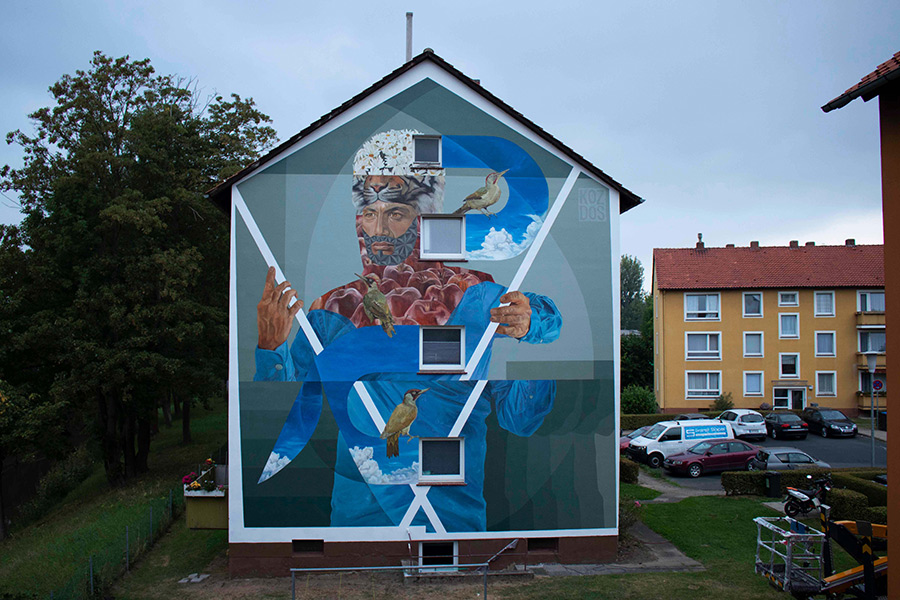
BSA: What excites you in the world now? Is there anything that feels like a positive development in our current state of affairs worldwide?
KD: I am excited that there is a lot of information on the environment, information of all kinds. Everything is accessible, with millions of people willing to share knowledge. There’s also tons of bad and negative information, but it is up to us how to be informed. Taking the positive side of this is great. One can share one’s perspective and concerns with others, making it universal information. This has made the world evolve in many ways. At the same time, young people are more aware of the world’s problems, are more vocal, and are interested in topics that were previously taboo or hidden from them by gatekeepers. Today’s technology enables kids to have their own criteria and ideals and create their voices. I hope that there are more positive and inclusive developments that give us the capacity to grow. Come on, it’s possible!
The preceding interview was translated from Spanish to English and edited for brevity and clarity.
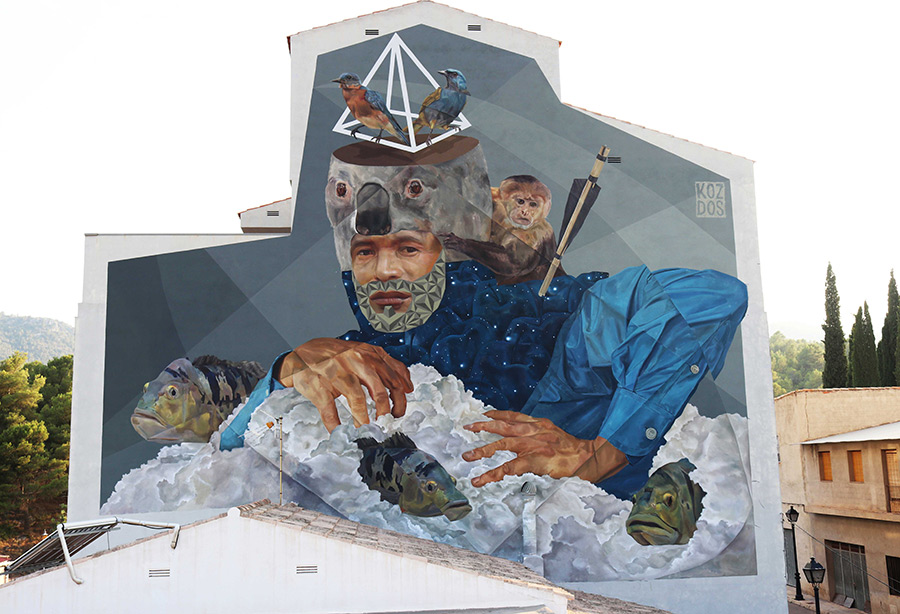
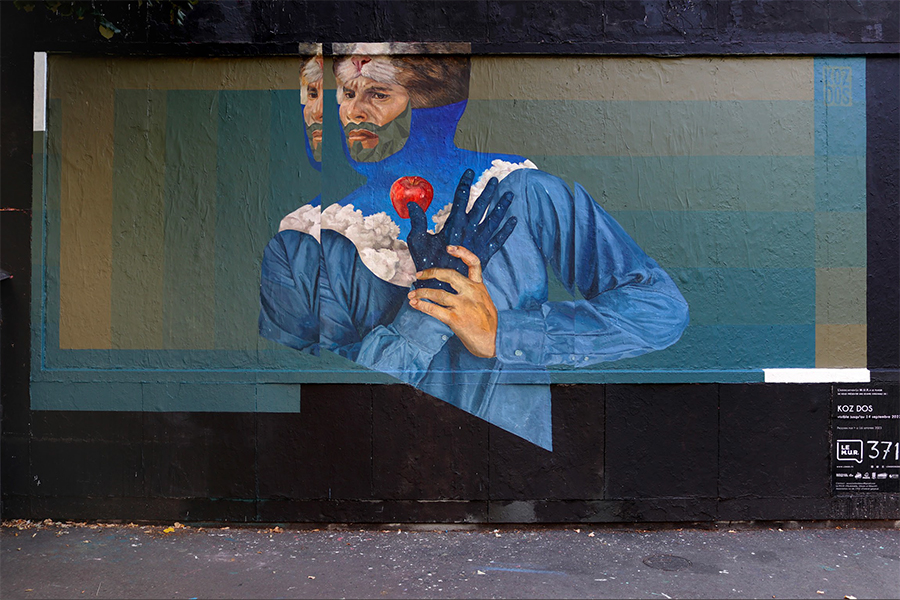
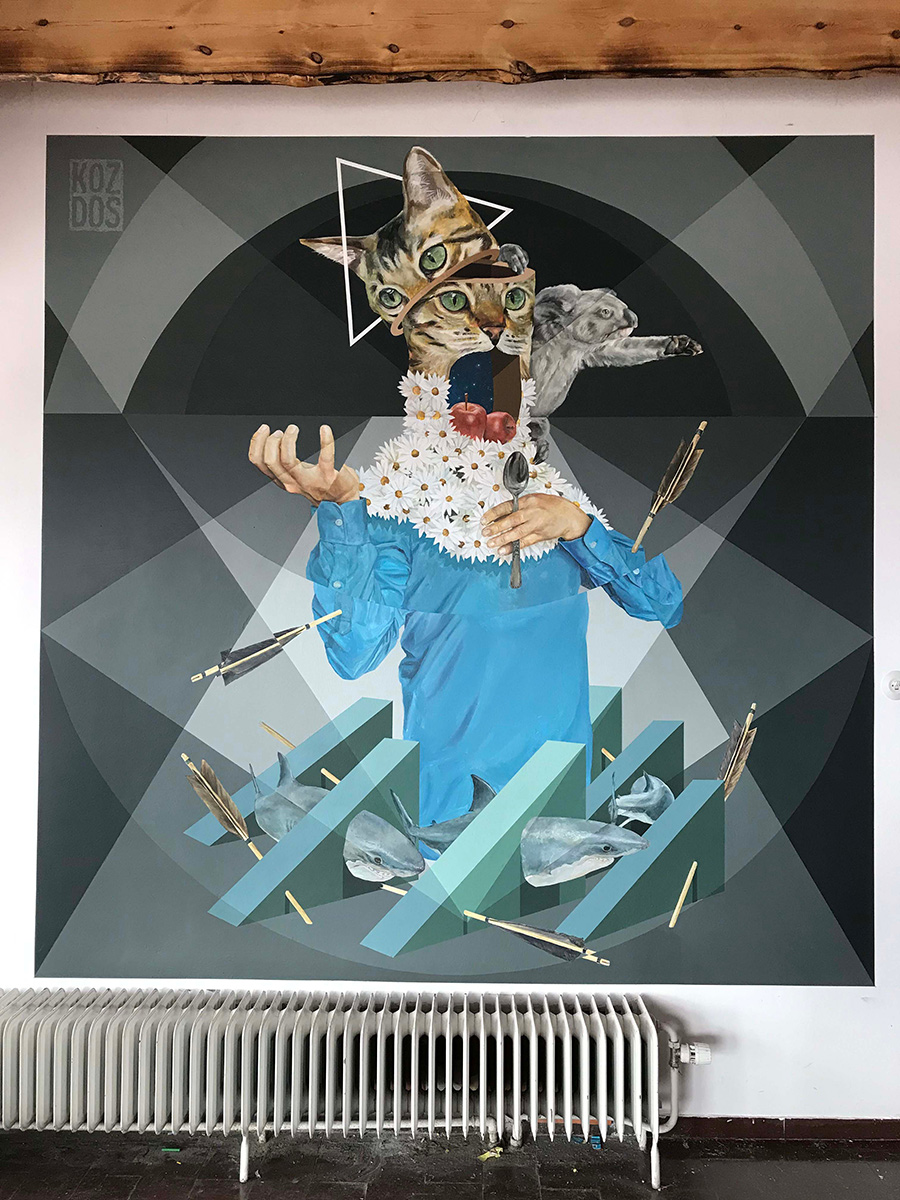
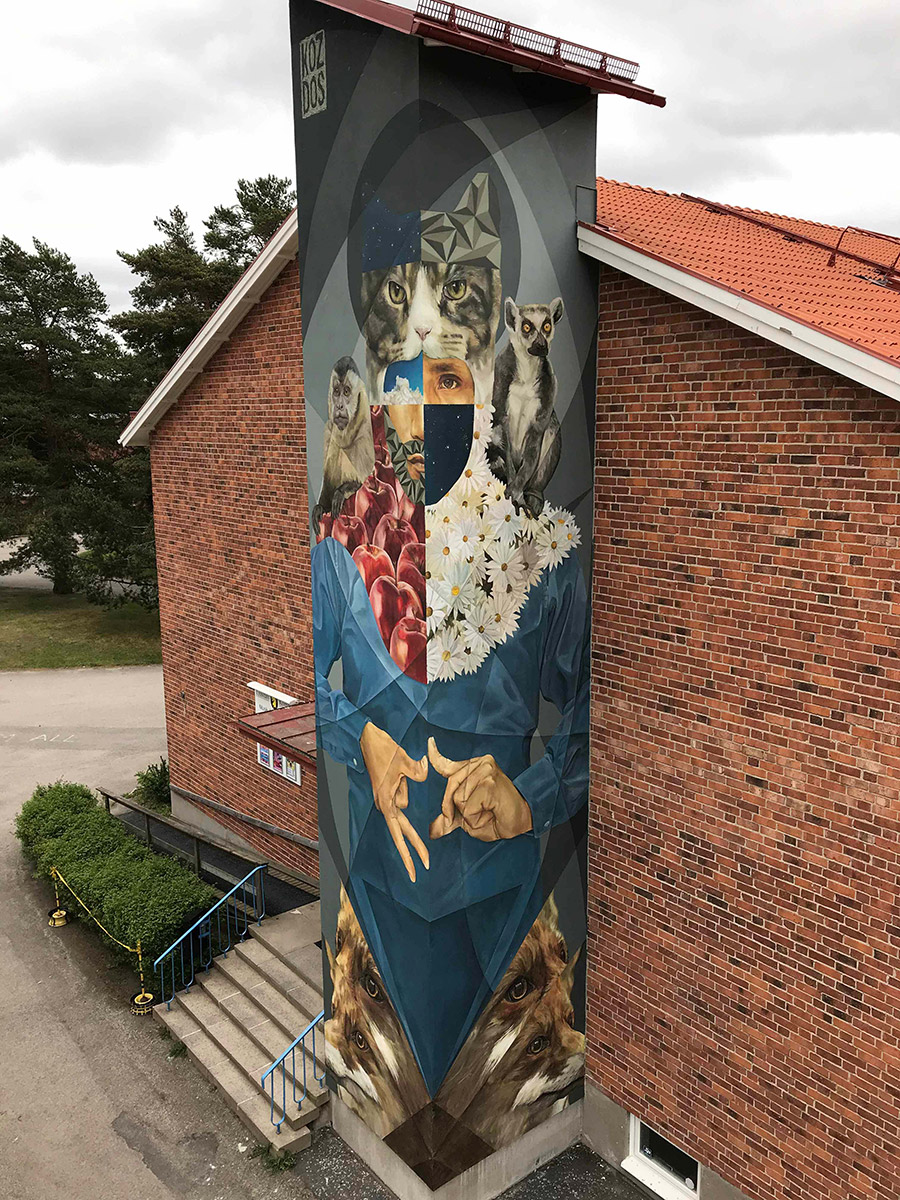
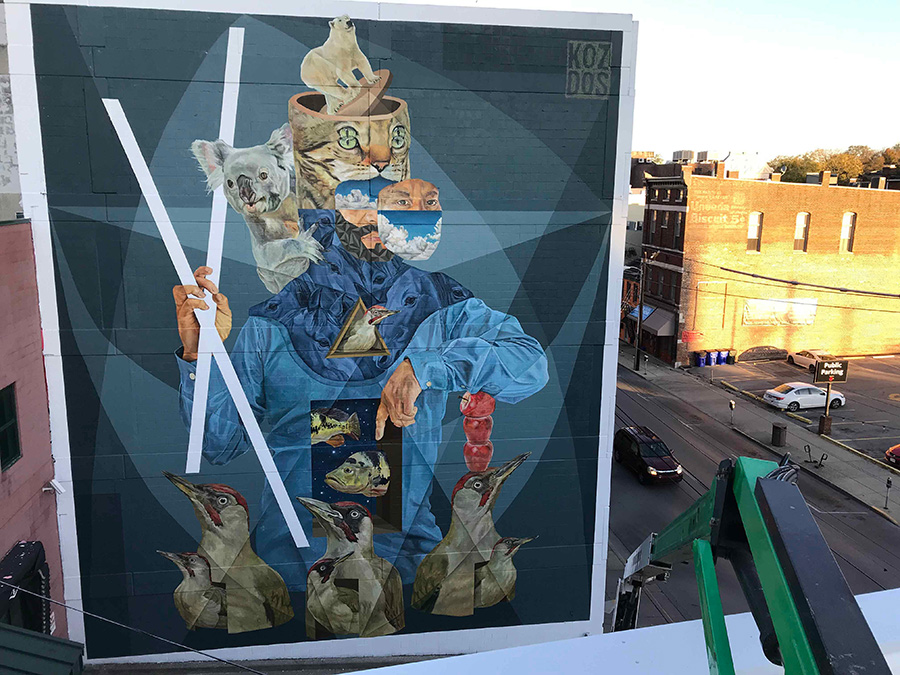
 BROOKLYN STREET ART LOVES YOU MORE EVERY DAY
BROOKLYN STREET ART LOVES YOU MORE EVERY DAY